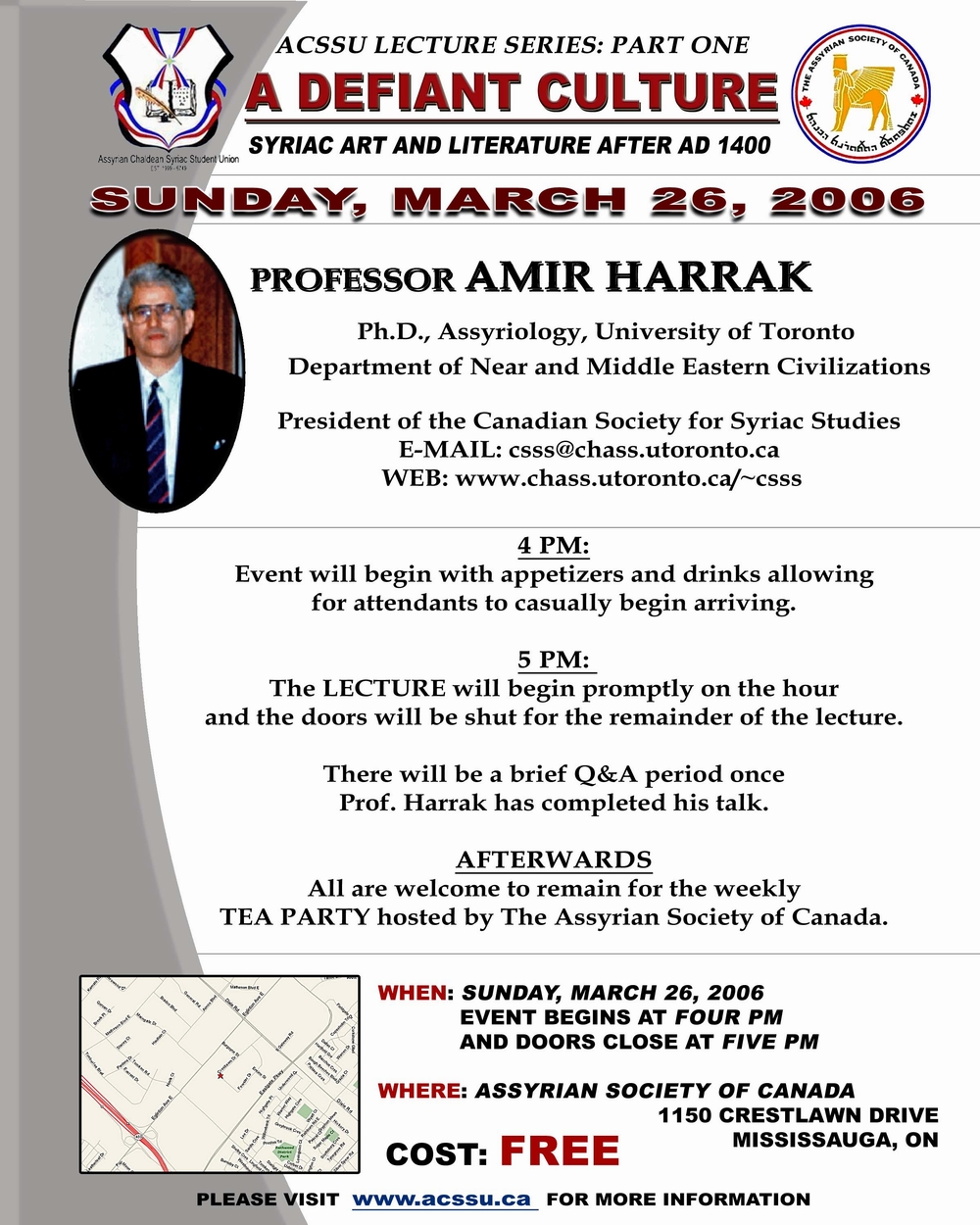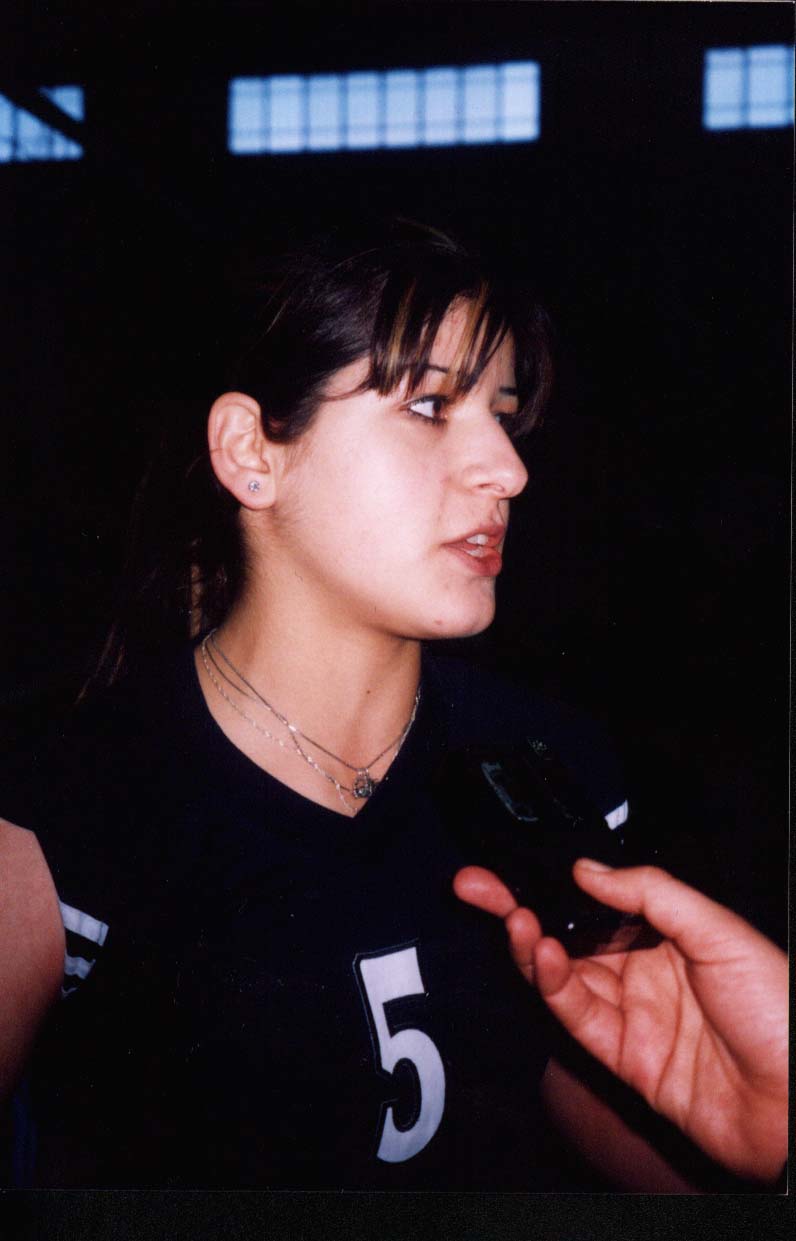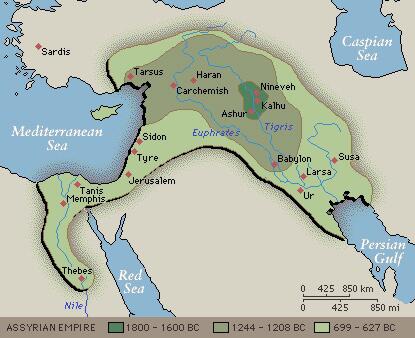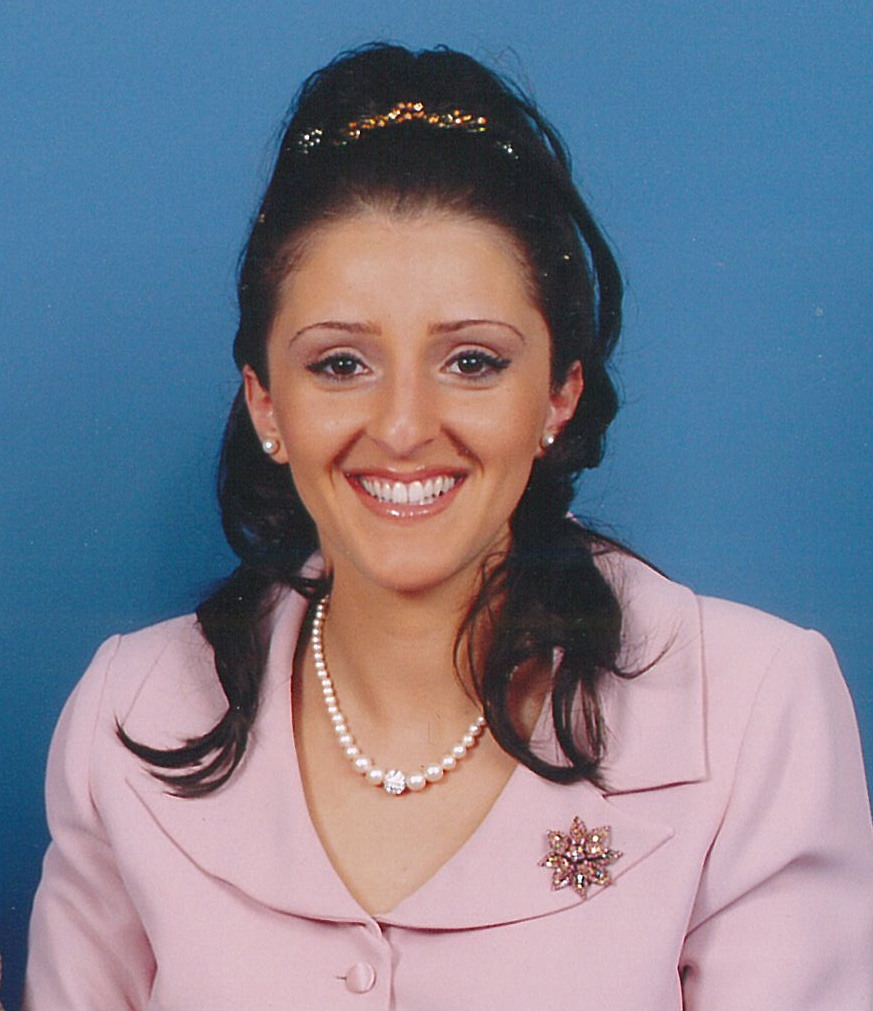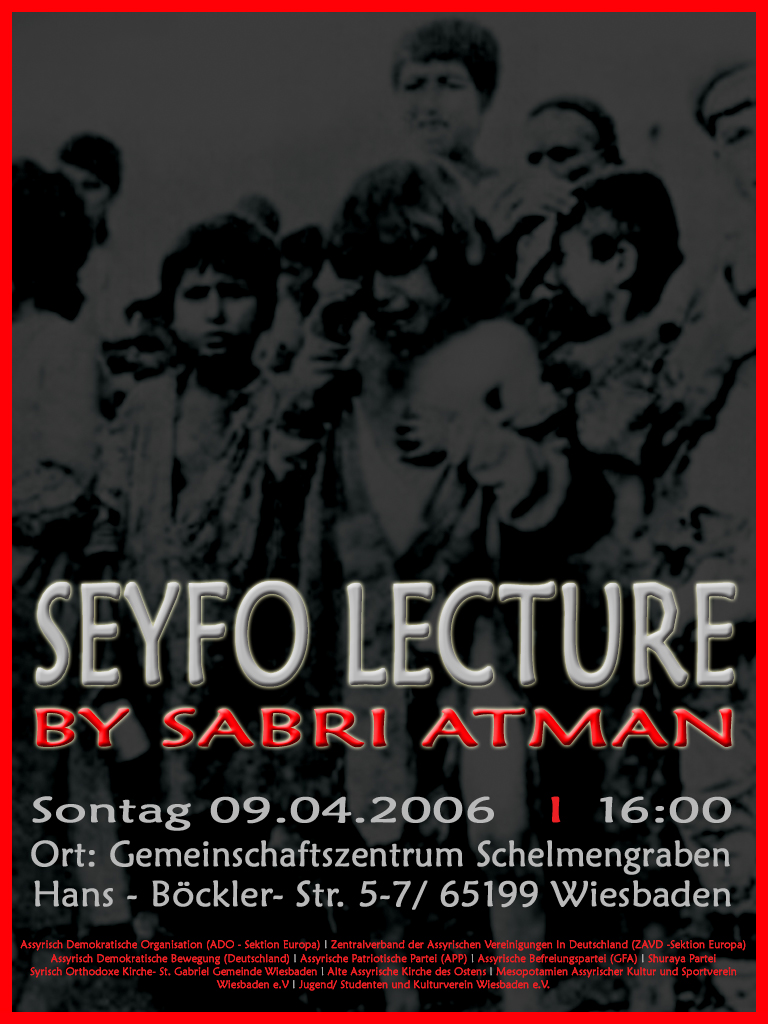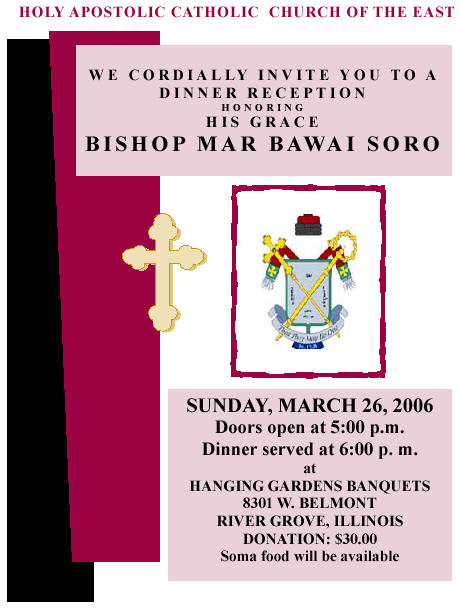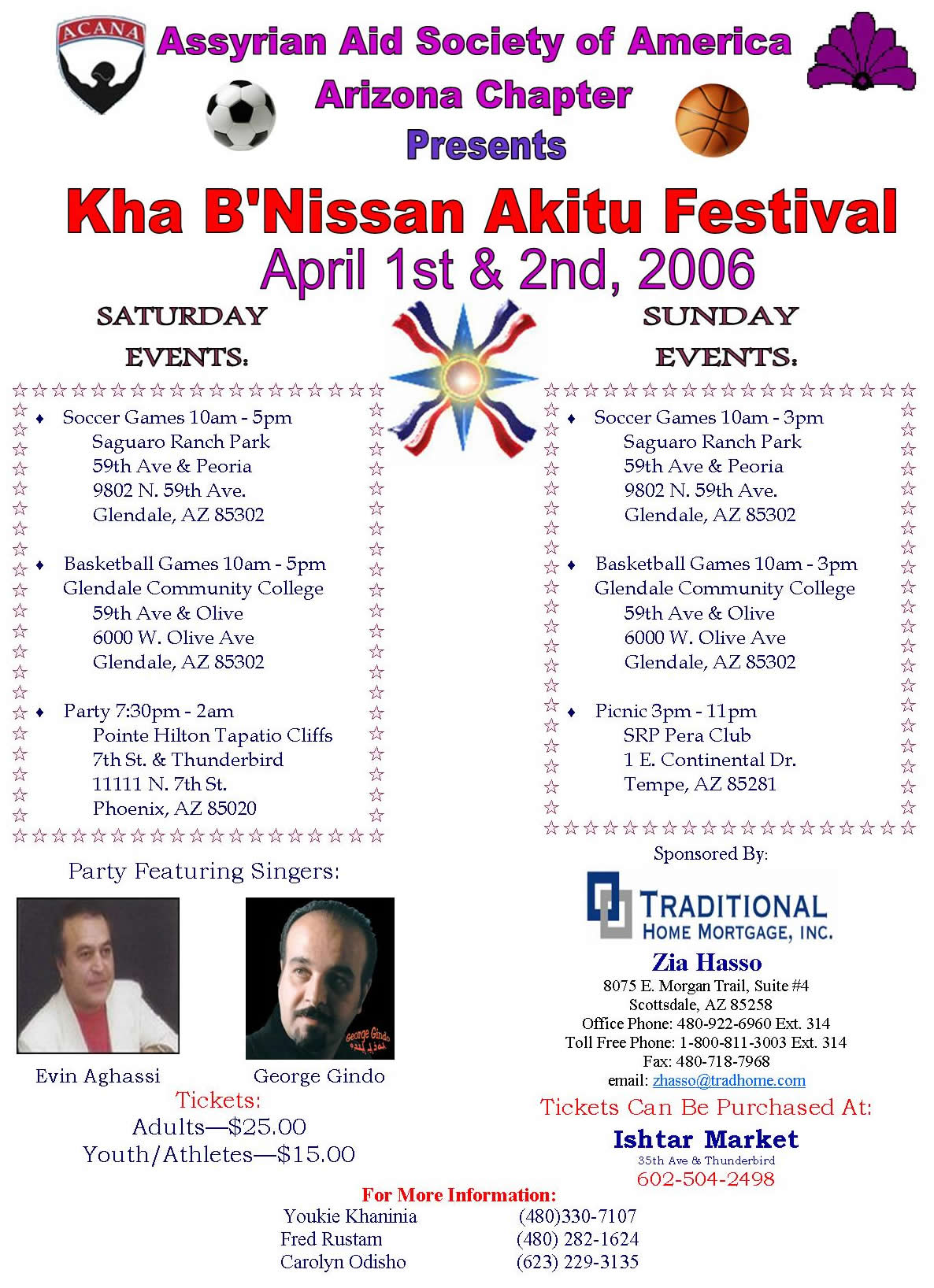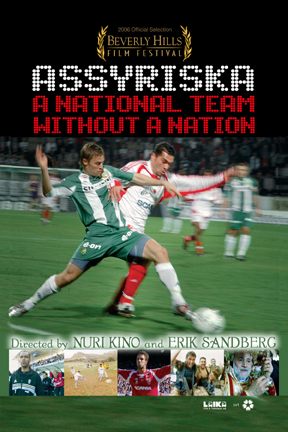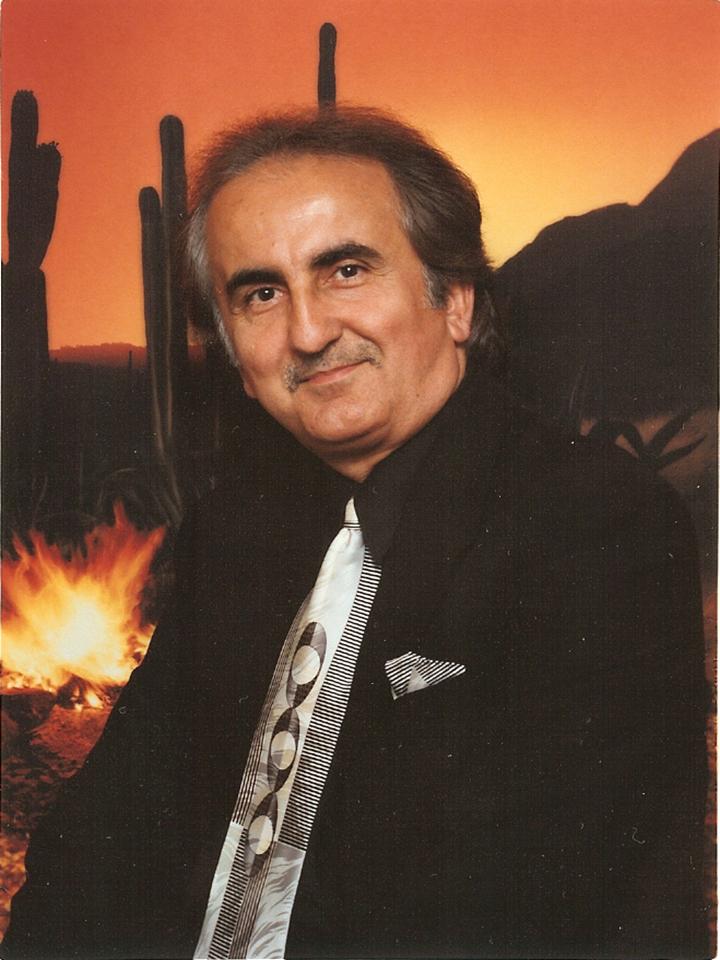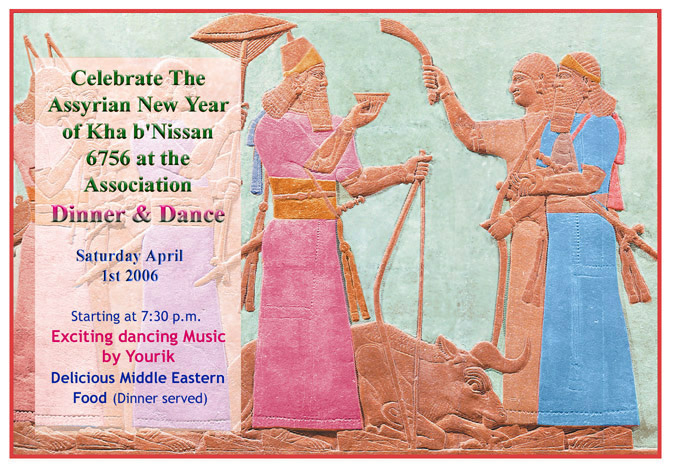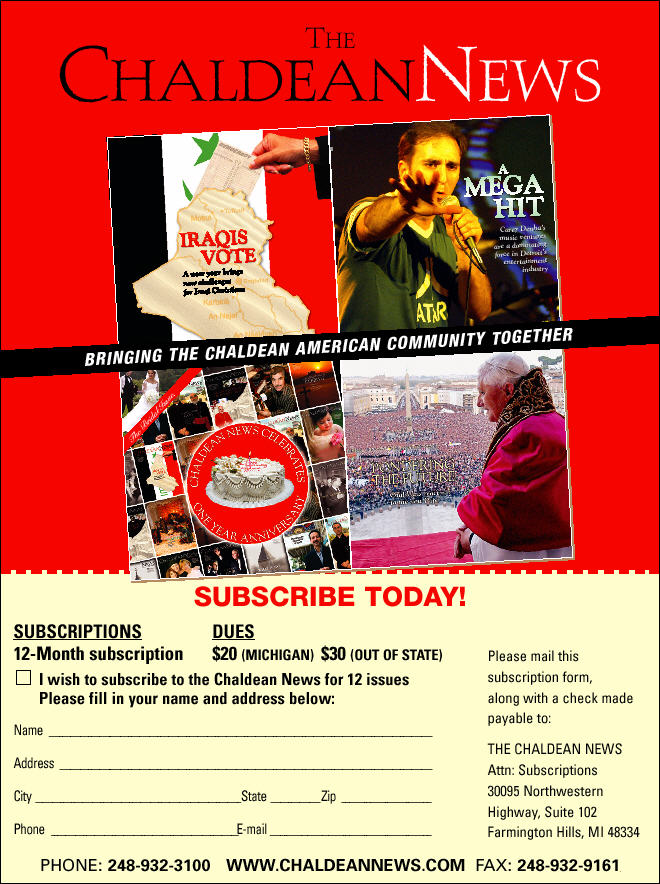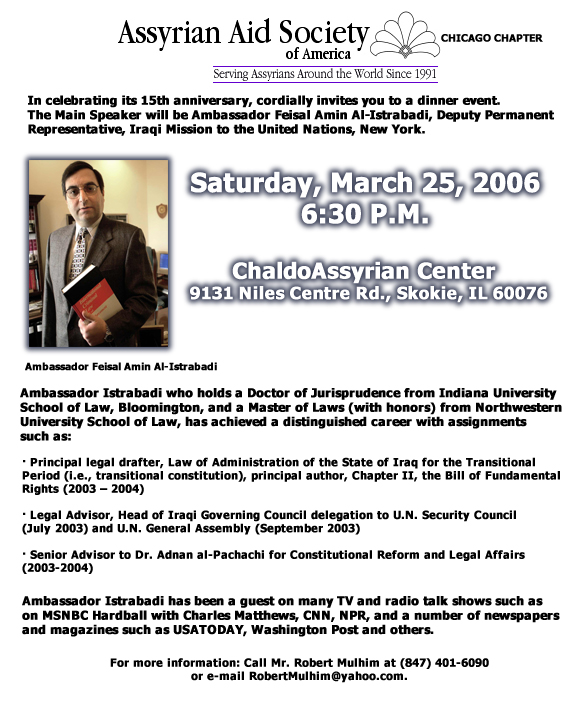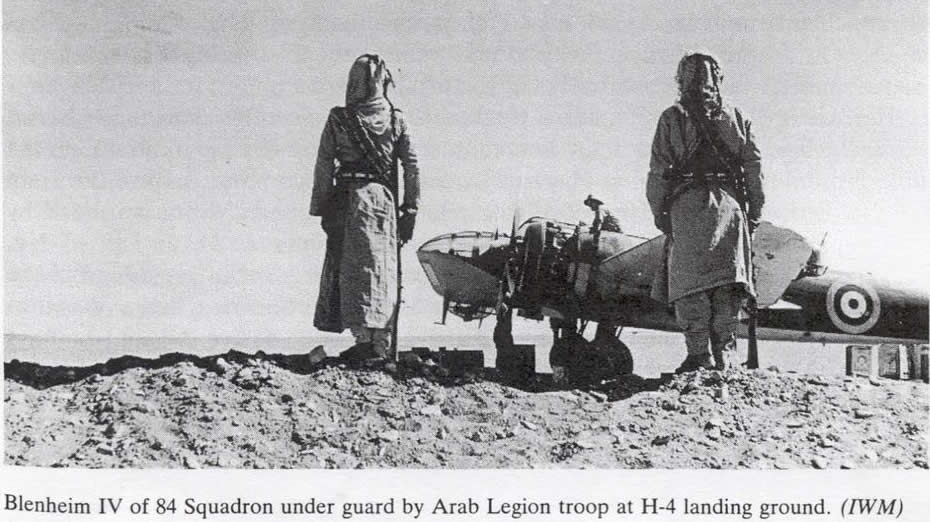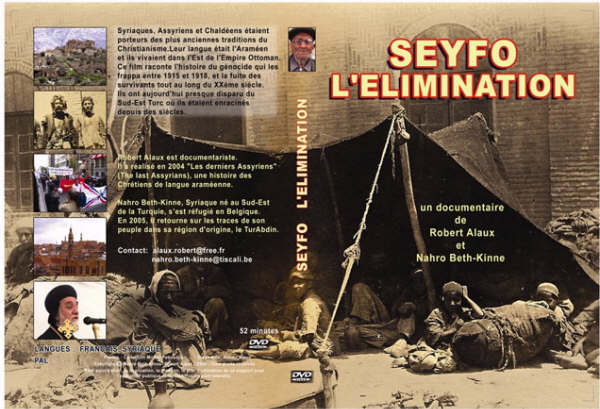|
Volume XII |
|
|
|
Tel 202-349-1429 | Fax 1-415-358-4778 | zcrew@zindamagazine.com
1700 Pennsylvania Avenue. NW Suite 400 Washington, DC 20006 U.S.A. |
|
|
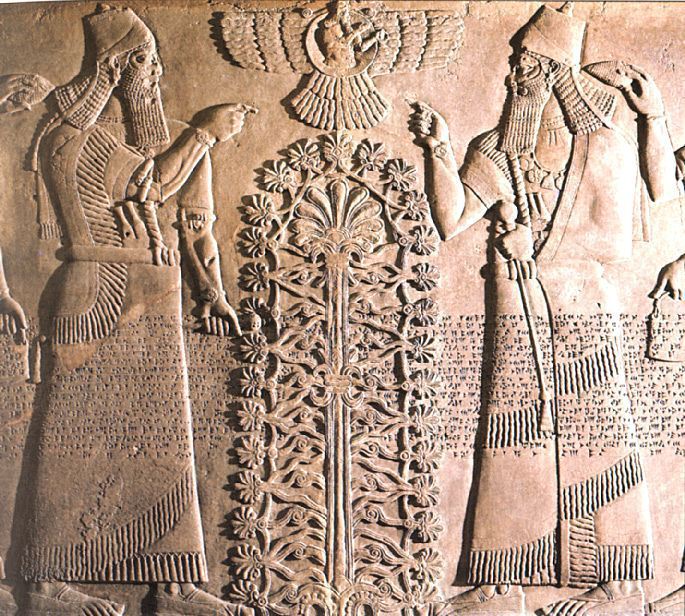
|
Happy Assyrian New Year
6 7 5 6
20-21 March 2006 |
|
|
|
6756: Year of Accountability |
Wilfred Bet-Alkhas |
|
|
Assyrian Heritage DNA Project |
Dr. Joel Elias & Mary Yonan |
|
|
Assyrian Basketball & Volleyball Star Shines in Iraq
Investigating Nineveh's Canals from Space
Nina Shea Testifies on
Human Rights in Iraq |
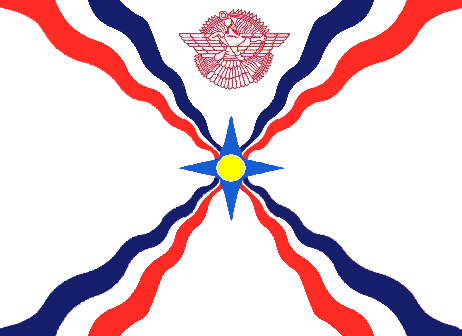 |
|
|
Detectives Probe Shootings at Yonkers' St. Mari's Church
15 Turkish Nationalists Gather at “Talat Pasha Rally” in Berlin
Hundreds Mourn Chaldean Robbery Victim in San Diego
Yale University To Digitize Iraqi Academic Journals
Dutch Writer Follows Footsteps of Nestorian Marco Polo |
|
|
|
|
|
What Kind of Government will Iraq Have?
New Executive Board of AAA of Southern California
Thank You the Honorable Mr. Bet-Kolia !
Wanted: Assyrian Electronic Documents
Yonadam Kanna in South Africa
Human Race Walkathon Benefits Assyrian Aid Society |
Click to Learn More
ZINDA CALENDAR
ZINDA ARCHIVES |
|
|
U.S. Premiere of Assyriska Documentary in Los Angeles
Last Call for Bedjan’s Homilies
of Jacob of Sarug in East Syriac
Kha b'Neesan Celebration in Los Angeles
|
|
|
|
Boosting Aghajan and Hariri...
Building Bridges with the KDP
The Current Assyrian Politics: Failures and Hopes
Iraqi Christians: Caught in A Refugee Web
Christian Churches in Iraq Subjected to Synch. Terrorism
Honey and Vinegar: Attitudes toward Iran's Assyrian Christians
Did the British Really Do the Good Fight Once Before in Iraq? |
Fred Aprim
Eva Shamouel
Dr. George Habash
Yigal Schleifer
Dr. Nimrod Raphaeli
Dr. Eden Naby
Mikhael K. Pius |
|
|
Robert Alaux's New Film Documentary about Seyfo |
Afram Barryakoub |
|
Zinda Says
An Editorial by Wilfred Bet-Alkhas
|
6756: Year of Accountability
On the eve of the new year 6756, Assyrians are seeking leaders who can construct a nation based on a solid political ideology that can guide this nation through the storms bitterly moving us in different directions.
Our problems seem to be overwhelming the capacity of our leaders. No one is immune. From the patriarchs to the statesmen, anyone who could play a pivotal role in our nation’s future is mired in the sludge of religious, tribal, and petty political skirmishes. In some cases they are costing our nation hundreds of thousands of dollars in legal fees, in others millions of dollars of uncollected international assistance. The issue of leadership, 90 years after the Seyfo Genocide of 1915, is as acute as it has been since the demise of the Assyrian imperial power.
We begin the new year with compelling questions that must be answered promptly, wholly, and authoritatively:
Who is running the show in Iraq, in the U.S., in Europe, & in Australia?
Who can speak on behalf of the entire nation of Assyrians (also Chaldeans and Syriacs) before the representatives of world governments?
Which leader wishes to build an administrative region for the Assyrians in Iraq?
Who among us prefers the emigration of Assyrians from the Middle East over the return of the displaced families?
Which individuals or groups support the division of our Church(es)?
And finally, when asked to join in a gathering of all significant leaders who will decline the invitation in order to assert his group’s primacy?
Our nation is troubled and is praying for someone to take command of this ship of fools. Fools that have eyes but cannot see, ears but cannot hear, and hearts but cannot love.
6756 shall be known as the year of accountability – for the 40,000 votes cast for inexplicable course of action, for the $350,000 dollars raised to atone for unholy allinaces, and for the policies and apathy that left thousands wandering in the refugee camps of the Middle East.
While the problems of the Assyrian nation appear unimaginably difficult, in the hands of skilled leaders this chaos can be transformed into order and calm. Our leaders, both political, civic, and spiritual, must be held accountable for every action taken. They must then assert a moral presence that would transcend our religious, tribal, and linguistic differences. They must remind us that we are of one nation and struggling for one purpose.
Among us are leaders who manage multi-million dollar corporations, write constitutional legislation for developing nations, lead religious orders with millions of non-Assyrian worshippers, and artists that produce Oscar-nominated films. They all have one thing in common – they do not share our vision. Why are they not with us?
Leadership has not disappeared from our midst. Lack of it is a reflection of our own nature, resulting from the post-Genocide conditions created by our natural enemies. To harness strong leaders we must first find ways to work together, forgive and forget. Dissension and hatred are the enemies of association. They are opposed by the spirit of sacrifice and duty, qualities that many of us possess toward all things possible but the struggle of the Assyrian nation.
6756 shall be the year we hold our existing leaders accountable and begin inspiring our tomorrow’s leaders about the future of the Fertile Crescent and the revival of the vestiges of a splendid past.
Through our optimism and sincerity, respect for authority, and tolerance for each other we will permit the emergence of new leaders – strong and effective – who will guide our nation to the shores of Nineveh.
|
|
|
The Lighthouse
Feature Article
|
|
Assyrian Heritage DNA Project
Dr.
Joel Elias & Mary Yonan
California
The newly formed Assyrian Heritage DNA Project welcomes everyone (male and female) who has a direct male or a direct female line with Assyrian ancestry to join the project. The National Geographic Genographic participants are most welcomed, as well.
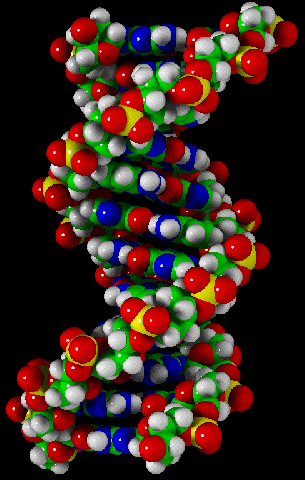 |
A computer generated strand of the DNA molecule |
“Modern Assyrians are the descendents of the ancient Assyrians who have continued for thousands of years to occupy a land known by the Greeks as Mesopotamia, a reference to a region between the Tigris and the Euphrates Rivers. Although the Assyrian Empire fell in 612 BC, the Assyrian people, contrary to common belief in the west, did not vanish. Modern Assyrians trace their heritage back to the ancient Assyrians. After the fall of their empire, the Assyrians continued to live as peasant subjects under conquerors such as the Mede Persians and the Greeks. With the coming of Christ, Assyrians were one of the first people, besides the Armenians, who accepted Christianity. As Christians, the Assyrians lived chronologically under the Parthians, Romans, Sassanid Persians, Arab Caliphate, Mongols, Ottoman Turks, and finally Arabs.” (Quote taken from Fred Aprim's article entitled "The Assyrians of the San Joaquin Valley, California: From Early Settlements to the Present" which is posted on Nineveh On Line)
Y-chromosome (Male) DNA (Y-DNA) testing follows the direct paternal line of father to son down through the generations back to ancient times and is only done on males. The Y-chromosome (Male) DNA test only looks at the Y-chromosome gene and females don't carry this gene. If a female wants to establish her father's line, she needs to find a related Assyrian male on her paternal side for the test.
Mitochondrial (maternal) DNA (mtDNA) testing follows the direct maternal line of mother to daughter down through the generations back to ancient times. Both male and female children inherit their mother's mitochondrial DNA but only daughters pass it on to their children. Any living person, male or female, can be tested for mtDNA, but only males can be tested for Y-DNA.
As there have been many cultures and nations that have influenced Assyrians over the centuries, it is important to look beyond surnames and often beyond geographical boundaries to find our ancestors of several generations ago. Some Assyrians may not know the place of origin of their Assyrian ancestors. For these reasons it is important to take a more global approach and to compare the DNA results of all those with Assyrian Heritage.
The goals of the Assyrian Heritage DNA Project are:
- To help Assyrians learn more about both the ancient people who preceded the beginning of the Assyrian Empire and about the ancient Assyrians.
- To try to help Assyrians, both male and female, learn the place of origin of their Assyrian ancestors.
- To try to help Assyrians learn about the migration paths of their ancestors during the diaspora after the fall of the Assyrian Empire in 612 B.C.
- To try to help Assyrians who live in the USA and other western countries find relatives living in the West and/or in the Middle East who match their DNA score.
Both Y-DNA and mtDNA results are helpful to this project. Any Assyrian surname of your paternal or maternal line is accepted.
Available tests, costs of various tests, and how to place an order:
The Family Tree DNA Company (FTDNA) is the company that is analyzing the DNA samples for our DNA project. The company is located in the United States, but they can mail their kits to any place in the world. The Arizona Research Labs located at the University of Arizona in Tucson perform the scientific analysis of the DNA samples and FTDNA continues to expand the database of DNA test results that will help participants to achieve the goals of our Assyrian Heritage DNA Project.
FTDNA is offering at reduced prices a variety of tests to registered groups like our Assyrian Heritage DNA Project. The following is our recommendation of tests that would be most helpful to Assyrians who want to learn more about their ancestry.
Tests for a man to consider if he ONLY wants to test his Assyrian father’s line: (Choose only one)
(1) 25 Marker Y-DNA test which tests the paternal line ONLY--$169 (US dollars)
(2) 37 Marker Y-DNA test which tests the paternal line ONLY--$219 (US dollars)
Combined Tests for a man to consider if he wants to test BOTH his Assyrian father’s line and his Assyrian mother’s line: (Choose only one)
(1) 25 Marker Y-DNA test + mtDNAPlus which includes BOTH the 25 marker paternal and the high resolution maternal line DNA tests -- $319 (US dollars)
(2) DNAPlus test which includes BOTH the 37 marker paternal and the high resolution maternal line DNA tests -- $359 (US dollars)
Maternal Line Test that a man or a woman can order to test his or her Assyrian mother’s line ONLY:
mtDNAPlus Test which analyzes the high resolution maternal line DNA ONLY--$189 (US dollars)
Since women inherit ONLY their mother’s mtDNA, this is the only test that a woman can order and it will test her maternal line DNA. Women do not inherit Y-DNA, so they would need to recruit a male relative of their father’s line to take a Y_DNA test to analyze the paternal line DNA.
If a man has ONLY maternal Assyrian ancestry, he should order the mtDNAPlus test.
NOTE: If a man wants to test both his paternal and maternal lines, he should order one of the combined tests above.
It is necessary to add $2 shipping within the USA or $4 international shipping cost to whichever DNA test you order.
What is involved in taking the test?
A few days after ordering the test kit, you will receive a small package in the mail. It contains two small vials with preservation fluid, two “mini toothbrushes”, and easy to follow instructions. You scrape the inside of the cheek with each brush, place them into the vial, and drop the package in the mail. It’s that simple. No pain. No blood.
Included with your DNA Kit will be a Release Form which you must sign because it will give FTDNA permission to inform other participants in the DNA Project who may match your DNA scores and enable you to communicate with each other. The form will ask you to indicate your Paternal Ancestry's Country of Origin and your Maternal Ancestry's Country of Origin. These countries should be the country where your paternal and maternal ancestors came from. If you can trace the ancestry of your Assyrian parent(s) back to Urmia, enter "Iran"; if Hakkari Mountains, enter "Turkey"; if Nineveh Plain, enter "Iraq"; or if your earliest known Assyrian ancestors were from another country, give the name of that country. Your paternal and maternal countries of origin may be the same or they may be different.
What do the results look like?
The results are a series of numbers that indicate the composition of the DNA at a specific location (marker). When two participants compare their results with each other - the more numbers that match - the better the chance that the two participants have a common ancestor. The more markers tested, the more precise we can be in finding that ancestor.
Will I receive help interpreting the results?
Absolutely. Your results are important to us all. The more participants, the better we can understand how we are all related. The project administrators will assist you in every step along the way in your new adventure.
What is the Genographic Project?
Family Tree DNA and the National Geographic Society are working together on the Genographic Project which is “a five-year effort to understand the human journey—where we came from and how we got to where we live today. This unprecedented effort will map humanity's genetic journey through the ages.” This project specifically intends to collect DNA from Assyrians living in the Middle East today which will provide invaluable information for our Assyrian Heritage DNA Project. Anyone who receives his Y-DNA and/or mtDNA test results from FTDNA can transfer his/her DNA results to the Genographic Project. It will cost $15 to transfer Y-DNA results and $15 to transfer mtDNA results.
How do I join the Genographic Project?
When you order DNA test(s) from FTDNA, you will receive an e-mail message informing you about your personal webpage on the FTDNA website where your DNA test results will be posted. You can transfer your DNA test results to the Genographic Project from your FTDNA personal webpage. Here are the steps to follow:
(1) Find the Orange Tab on your FTDNA personal webpage that says GENOGRAPHIC PROJECT and click on it.
(2) Read the screen and click on “I AGREE” to transfer my DNA scores to the Genographic Project.
(3) The next screen will include your name and address. At the bottom of the screen you will indicate that you are going to pay $15 to join the Genographic Project and you must indicate whether you want to transfer your mtDNA or Y-DNA results. (You can only do one at a time.) Click CONTINUE.
(4) On the next screen you will fill out your credit card information for payment of the $15 fee. Then click CONFIRM. Only click it one time.
(5) The last screen that you will see is a screen which you MUST PRINT because it contains your Genographic Project ID # that you will need in order to log onto your personal record at www.genographic.com
(6) If you want to transfer both your mtDNA and Y-DNA results to the Genographic Project, you will need to complete steps 1 through 5 again to transfer the other set of DNA results that you did not transfer the first time. You will pay another $15 fee. Again, be sure to print out the last screen that you see because that Genographic Project ID # will be different from the first one that you received.
Your Y-DNA or mtDNA test scores are useless for insurance or criminal justice purposes because they contain absolutely nothing that would identify you as a specific individual, and absolutely nothing about your health or physical characteristics. Moreover, an evidence chain of custody is not maintained. There is no witness statement regarding you taking your cheek swabbings, it is mailed through the general mail system without receipts, and it is processed in the labs without constant evidence receipts along the way.
Family Tree DNA protects your privacy. The DNA that is extracted from your sample is kept by the Arizona Research Labs at the campus of the University of Arizona for a period of 25 years for your exclusive use. It is important to note that Family Tree DNA adopts a "double safety net" in regard to your sample: Arizona Research Labs keeps the DNA associated to a number and not a name, while Family Tree DNA offices keep the database of DNA results with no access to the actual DNA sample.
The administrators of the Assyrian Heritage DNA Project have no affiliation with Family Tree DNA or the Arizona Research Labs located at the University of Arizona in Tucson and receive absolutely no compensation for their volunteer work as project coordinators. This project is run by participants, for participants.
You may join the Assyrian Heritage DNA Project by filling out a Join Form (click here).
A participant will need to submit his/her name, mailing address, e-mail address, etc. to order a DNA sample kit to be mailed to him/her.
You can also order a kit by mail or by phone directly from FTDNA at:
Family Tree DNA - Genealogy by Genetics, Ltd. World Headquarters
1919 North Loop West, Suite 110
Houston, Texas 77008, USA
Phone: (713) 868-1438 | Fax: (832) 201-7147
 |
In summary, A DNA testing kit that uses a small swab of DNA can help shed light on near and ancient family history. The sole purpose of the Assyrian Heritage DNA Project is to help the participants discover which families have a common ancestor within the past 200 to 300 years and to learn more about our ancient heritage. Since modern Assyrians descend from the ancient Assyrians, the results of our DNA Project may provide long-term assistance to scientists who are hoping to track the history of the human race. We encourage participants to add their DNA test results to the National Geographic Genographic Project after they receive their DNA test results. The Genographic Project is a landmark five-year study that will assemble the world's largest collection of DNA samples from people living in all parts of the world to map how humankind populated the planet. Since Assyrians descend from such a significant ancient civilization, a large sampling of Assyrian DNA needs to be represented in the Genographic Project's database so that the place of Assyrians in the world community will be recognized.
To learn more click here to view the Assyrian Heritage DNA Project Results public webpage.
|
|
Good Morning Assyria
News From the Homeland
|
Assyrian Basketball & Volleyball Star Shines in Iraq
|
Maureen David holds several championship records in Iraq's regional and national basketball and volleyball championships. |
(ZNDA: Dohuk) A 20-year-old Assyrian girl is quickly winning the hearts of the Iraqi people as one of their favorite athlete stars. Her name is Maureen David, an astonishing basketball player, a member of the Sennacherib Club of Dohuk.
Maureen David is a member of Iraq's national basketbal team.
The Sennacherib basketball team also includes Ivon David, Marlene Francis, Juliet Giwargis, and Caroline Albert.
Ms. David's astounding athletic skills on the basketball court are echoed on the volleyball courts of Iraq. Last year her basketball team from Dohuk won first place in Iraq's national championship and in 2004 her volleyball team placed third.
To add a few more accolades to the records already held by this Assyrian sports champion, Ms. David also holds records in high and triple jump.
Ms. David attends the Nisibin High School, which has won several basketball and volleyball tournaments in the governorate of Dohuk.
Investigating Nineveh's Canals from Space
Courtesy of Harvard University Gazette
By Alvin Powell
The view from space of an ancient canal network is recasting archaeologists' understanding of the Assyrian capital of Nineveh and of the farming economy that supported it at its height of power almost 3,000 years ago.
The work of Assistant Anthropology Professor Jason Ur, detailed in the November/December issue of the archaeology journal Iraq, is casting doubt on the long-held belief that canals that brought water from springs and rivers far to Nineveh's north were mainly constructed to support the city's elaborate gardens.
Using declassified satellite photographs taken decades ago, Ur found what he believes is evidence of branches in the canals that indicate extensive agricultural irrigation in the lands north of Nineveh that scholars had thought dependent on rainfall for their annual production.
With irrigation, those fields would have been potentially far more productive than if they had been reliant on the vagaries of natural rain. Ur said the canals indicate that the farming system underlying what was then the Middle East's dominant empire was more complex and organized than previously thought.
There were likely smaller satellite cities in the areas where the canals branched, Ur said, some of which remain undiscovered or buried under modern villages.
"What I would guess is that there are undiscovered population centers there," Ur said. "The irrigation infrastructure is there to support larger settlements. We have to go and find them."
Satellite photographs can be powerful tools for archaeologists in detecting broader patterns of settlement and networks that accompany ancient civilizations, such as roads and canals, Ur said.
An archaeologist trying to piece together these great works can walk the ground, digging to examine a promising mound here or an outcropping there. It helps, however, to step back from the landscape and look for patterns and structures that may be difficult or impossible to detect from the ground, where thousands of years of farming, road building, and urban development obscure all but bits and pieces.
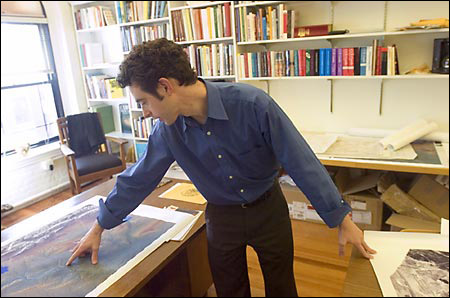 |
Jason Ur: 'If you press your nose against a Monet, all you see is a blur. If you take a few steps back, you see lilies, you see bridges. For this reason, remote sensing data is really irreplaceable.' (Staff photos Kris Snibbe/Harvard News Office) |
"If you press your nose against a Monet, all you see is a blur. If you take a few steps back, you see lilies, you see bridges," said Ur. "For this reason, remote sensing data is really irreplaceable."
Low-level aerial photographs can serve a similar purpose as satellite photos, Ur said, but some nations don't allow archaeologists in, never mind flying over their countryside with a camera.
Further, he said, Cold War-era photographs allow researchers to look back in time at a landscape that may have been lost in the intervening years through urban development, military action, or other human activities.
Urban sprawl from the nearby Iraqi city of Mosul is a concern around Nineveh, which lies across the Tigris River. Already, Ur said, expansion of Mosul has obscured many features around Nineveh's clearly defined walls that were visible in satellite photos from the 1960s.
In addition to his work on Nineveh, Ur is examining the road system around the Bronze Age city of Tell Brak in northeastern Syria. The roads into the city, about 2,000 years older than Nineveh, probably arose spontaneously, Ur said, as people and goods flowed into and out of Tell Brak. Ur said he's detected a progression from the main city, to smaller satellite settlements, out to farms, to fields, and to pastures beyond.
"I'm interested in urban settlements and in how they were maintained and sustained," Ur said. "Irrigation, agriculture, networks of roads to satellite cities were probably very important to these early settlements because they were too large to sustain themselves."
In contrast to the natural growth of Tell Brak's road system, Nineveh's canals were public works, instigated and controlled by the central government, which at the same time was importing conquered people to act as labor. Ur said the Assyrians brought in not just men from the conquered lands, but whole families and villages, what he called entire "productive units."
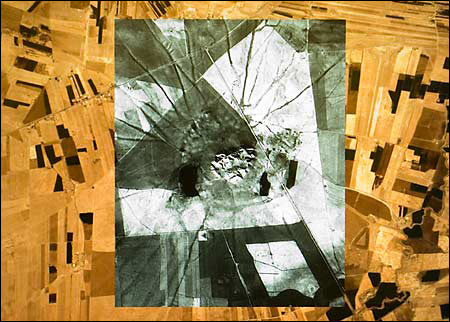 |
Satellite images of Tell Brak, Syria, led archaeologist Jason Ur to a deeper understanding of how ancient road networks moved food into the city. (Staff photos Kris Snibbe/Harvard News Office) |
"I see this as part of an overall demographic program, not only creating a new landscape, but also importing the labor to work it," Ur said.
Ur is a year into a new project in northwestern Iran, examining a new system of canals there thought to have been built by the Sasanian Empire, which battled Rome and the Byzantine Empire in the Middle East.
The researchers found the Sasanian canals from the satellite photographs, but also noticed small, brightly colored rings of what looked like stones dotting the landscape. On their first field expedition, in January 2005, Ur said they discovered the rings were circles of large holes - each hole about 6 feet wide - dug into the ground with earth mounded around them.
Researchers believe the holes were winter quarters for livestock, and the rings of holes represented winter campgrounds for pastoral people who spent summers in the nearby mountains.
Many of these ancient campsites have been destroyed by farming and development in the years since the photographs were taken, Ur said, making the satellites a valuable resource to understand how the land was used by ancient people. Without evidence from the photographs and a visit to investigate remaining campsites, the visible canals would have left evidence of the landscape's agricultural past, but remained silent on the land's use by ancient herding people.
"This is what I find interesting," Ur said, "how structures emerged."
|
|
News Digest
News From Around the World
|
|
Nina Shea Testifies on Monitoring Respect for
Human Rights Around the World, on Iraq
Committee on International Relations
U.S. House of Representatives
16 March 2006
On March 16, 2006, Ms. Nina Shea, the Director of the Freedom House's Center for Religious Freedom testified on State Department Country Human Rights Reports before the Subcommittee on Africa, Global Human Rights and International Operations of the U.S. House of Representatives International Relations Committee.
Shea's testimony addressed 12 country reports: China, Cuba, Egypt, India, Iraq, North Korea, Pakistan, Russia, Saudi Arabia, Sri Lanka, Sudan and Vietnam.
The hearing was held at 2:00 p.m. at 2172 Rayburn House Office Building. Others present included
the Honorable Christopher H. Smith, the Honorable Barry Lowenkron, the Most Reverend Thomas Wenski, Ms. Elisa Massimino, Mr. Ali al-Ahmed, and Ms. Sharon Hom
The following is the complete text of Nina Shea’s testimony on Iraq:
In Iraq, religious strife has been defined in recent months by the very visible escalation of
violence between the Shiite and Sunni Arab populations. The bombing in February of the
golden-domed Shiite shrine in Samarra and retaliatory attacks against a number of Sunni
mosques captured headlines worldwide. Less noticed is the mounting persecution of the
Christian, Sabean Mandean and Yizidi religious minorities, along with the Shabaks and
Turkomen. Christians, constituting the overwhelming majority of these groups, are
represented chiefly by Aramaic-speaking (the language of Jesus) ChaldoAssyrians and a
smaller number of Armenians.
BELINA GIVARGIS |
|
Mary Kay
Independent Beauty Consultant
(703) 772-8064
bgivargis@marykay.com

Click Image to Learn More
|
|
About a million of these minorities remain in Iraq, with their numbers rapidly dwindling.
Reportedly hundreds of thousands of Christians have fled the country over the last two
years since the first of now more than a dozen churches were bombed or attacked. Since
then other Christian property has been destroyed or confiscated, and many Christian
people have been targeted because of their faith for death, kidnapping for ransom, or
both.
As the UNHCR recently found: “Acts of violence reported by Christians and/or which
appear to target Christians include bombings and other attacks on churches … the serious
or fatal attacks on shop owners and/or business persons involved in trading and selling
alcohol, harassment, extortion, kidnapping, and even torture of persons perceived as not
respecting Islam (e.g. women who appear in public without a hijab, persons accused of
not respecting the teachings of the Koran and persons refusing to convert to Islam)…Others have been targeted for kidnapping against ransom based on the
perception that Christians are generally more wealthy than others.” It states further:
“While much of the hardship and harassment they report that they face is symptomatic of
the situation of general insecurity faced by all Iraqis in present day Iraq, members of the
Christian minority nevertheless appear to be particularly targeted.” (emphasis added).
Some neutral observers are estimating that as much as fifty per cent of the hundreds of
thousands of Iraqi refugees being processed in Syria are Christians. We could very well
be witnessing the extinction of the ancient Christian community in Iraq as their numbers
threaten to shrink to statistical insignificance. Though many incidents against them and
the other smaller religious minorities are recounted in the report, their overall devastating
significance for these communities is neither noted nor commented upon.
An Iraqi Muslim acquaintance recently visited my office to encourage the Center to
speak out about the plight of the Christian and the other smaller minorities. He told me
they are perceived as “weak” because they do not have their own militias and are few in
number, and thus “easy targets for brutalization by the extremists of all groups – Sunni
Arab, Shiite and Kurdish.” In his view, the United States has “abandoned” them. By this
he meant that the U.S. government should more effectively use its leverage with the
Kurds and Shiites to better ensure the protection of the small minorities, and should
ascertain that a fair share of U.S. aid goes to develop their areas so they can find a
modicum of security within Iraq.
Observers, myself included, have compared Iraq’s Christian community to a “canary in a
coal mine.” That is, the terror visited upon the Iraqi Christians, because they are weak,
will eventually become the pathologies and trends of the extremists directed against the
society at large, and, possibly, against other vulnerable minorities in neighboring
countries.
Christians, the original targets of kidnappings and assassinations carried out by thugs
disguised as police, continue to be victimized by this form of violence. The first
incidence reported of a person killed by militants disguised as uniformed police officers
occurred in Basra on November 18, 2003, when Sargon Nano, a Christian, was dragged
from his vehicle and shot. This method of uniformed thuggery was then spread to target
members of the Mandean religious community, and, today, it victimizes many Iraqi
sectors.
Islamist extremists have begun violently enforcing sharia rules on Christians. Ninety five
per cent of liquor stores, mostly owned by Christians, have now been destroyed or shut,
as the State Department reports. Christian women are being forced to wear Islamic head
coverings, some who do not suffer acid being thrown in their faces. A source at the
Assyrian Star magazine, the publication of the Assyrian American National Federation,
provided some other examples: On March 15, 2005 in Basra, as noted in the State
Department report, university students listening to music and not in hijab were attacked
by members of the Mahdi militias while picnicking. The Mahdi militants objected to the
music, the western attire, and the mixed male/female gathering. The report fails to note
that there was one student killed in the attack -- a 20-year-old Assyrian girl, Zohra Ashor,
who had her western-style clothes torn off before being clubbed to death. (In August
when the local office of al-Hurra tried to report on the event, it was threatened. The office
has since closed and the employees are in hiding.) Likewise, in Mosul, the only women
killed in targeted violence this past year were members of the ChaldoAssyrian
community. One of them, twenty-year old Anita Theodoros Harjo, a student in Nineveh
Art Academy, disappeared last August 8 as she ran errands between an Internet Café and
her home. Her beaten and bludgeoned body, still clad in her American jeans, was found
dumped in 'Akkab cemetery.
If such treatment of the Christians continues its pattern of broadening, what could follow
is the complete Talibanization of behavior of that part of Iraqi society that is within reach
of the Mahdi militias.
Christians and the other smallest religious minorities continue to be vulnerable
throughout Iraq, even in the Kurdish area, particularly the KDP-controlled parts, as the
report points out. The Iraq Sustainable Democracy Project (ISDP) reports that Kurds
linked to the KDP have confiscated millions of dollars of ChaldoAssyrian Christian
property in such towns as Derey, Coumaney and Maristak. At the same time, the political
disenfranchisement of many Christians that is acknowledged in the report regarding the
January 2005 elections, as well as the October 2005 referendum (which is not so
acknowledged), has exacerbated the Christians’ disadvantage in claiming an equitable
share of reconstruction funds. To give one example, in the town of Bakhdeda, home to
30,000 ChaldoAssyrian Christians, houses are collapsing and children are regularly
exposed to septic water as they play, but the churches appear to be in mint condition –
reportedly the result of a cynical allocation of reconstruction funds by Kurdish officials
there. KDP-controlled areas in northern Iraq could soon see parishes without
parishioners. In other places, such as the city of Mosul, there are increasing demands
posted to Christians, both particular and generic, to leave the city or risk death, reports
the ISDP.
Violations of the human rights of these non-Muslim groups are often hidden within the
report’s descriptions of the larger situation of insecurity and terror. Greater focus needs to
be given to the Christians and the smaller minorities for two essential policy reasons: First, the proportional effect of even small numbers killed on the diminishing
Christian population and the other non-Muslim minorities has enormous implications for
the continuation of religious diversity in the country, an important moderating effect on
that society, as well as for the survival of a unique and ancient Church.
Second, the tendency to concentrate on bigger groups and numbers masks the signs of
new trends and methods in the violence – methods that are practiced first on the“weakest” sector, the Christians and other small religious minorities.
Finally, as the tragic drama plays out concerning the abduction of Christian Science
Monitor journalist Jill Carroll, let us remember her translator, Allen Enwiya, a
ChaldoAssyrian who was shot immediately when they were captured. He had taken the
job to support his wife and small children after his music shop had been bombed. The
invisibility of his persecution and death, even in such a high-profile case, is a familiar
plight for Iraq’s smallest minorities.
The United States government should more closely monitor and report on these very
vulnerable religious minorities who are being preyed upon by all sides; ensure their
protection through effective diplomacy and through economic/reconstruction aid that
they themselves can administer for their villages and areas, engage in a consultation
process with their civic leaders to create for them safe havens within Iraq; and develop
opportunities to allow the safe return of the hundreds of thousands who have fled the
country and are now stranded in Syria and Jordan. In Iraq, the United States has the
political and economic leverage that could possibly determine the fate of Iraq’s
ChaldoAssyrian Christians and other small minorities.
The testimony of the Center and the other witnesses are available (click here).
Detectives Probe Shootings at Yonkers' St. Mari's Church
Courtesy of the Journal News
13 March 2006
By Will David
(ZNDA: Yonkers) Three young men were wounded — one of them critically — when a shooting broke out at a christening party for a one-year-old at the Assyrian Church of the East Parish of St. Mari in Yonkers, New York. The church is located on 129 Buena Vista Avenue and is shepherded by Rev. Dimitree Eskandar.
L i n d a B a d a l o f |
 |
I'm just a phone call away!
24200 Magic Mountain Pkwy.,105, Valencia, California 91355
Direct Phone: (661) 287-3200 x3468 Cellular: (661) 645-4290
Email: LindaBadalof@SCVFineHomes.com
|
"People started running back into the building from the parking lot and yelling, 'They are shooting,' " Youra Belmrood, 81, the church's business manager, said. Belmrood was inside the St. Mari Church when the gunfire broke out just after midnight.
The police arrested a 17-year-old Bronx resident from the party on a misdemeanor charge of possessing a handgun , found unloaded in his car as he was driving away from the party, but at press time there have been no arrests in the shootings.
The shooting occurred Sunday shortly after midnight in the parking lot of St. Mari Holy Apostolic Catholic Assyrian Church. The party was breaking up when the chaos broke loose.
The most seriously injured was a 17-year old from the Bronx, who was shot in the abdomen. He was in critical condition in a hospital.
A 16-year-old who was shot in the calf and the foot also remained in the hospital. Police found him wounded and bleeding on Radford Street blocks away. A 22-year-old who was shot in the thigh was treated and released. Both are from Yonkers.
Yonkers detectives are being tight-lipped about what triggered the shootings or how many people were firing guns.
"We are not going to comment on what direction the investigation is going," said Yonkers Detective Lt. Maureen Zadorozny.
Belmrood said he rented the basement hall to a woman for her 1-year-old daughter's christening party. He would not identify her.
Despite the bloody shooting, church services took place on Sunday morning as usual, Belmrood said.
15 Turkish Nationalists Gather at “Talat Pasha Rally” in Berlin
(ZNDA: Berlin) Despite the Berlin Police ban against "Talat Pasha Rally," Turkish nationalists held a gathering in the German capital last week. Turks were forced to change the rally site as the Armenian community of Berlin had already occupied the site. Turkish Zaman newspaper wrote on 16 March that at the rally were gathered 15 members of the Turkish Workers’ Party and Kemalist unions. The rally failed as a result of squabble between TWP and Kemalists.
Moreover, the Armenians of Berlin together with the Assyrian community organized their own rally carrying posters "No Hailing of Genocidal Turkey in Germany", "Armenians and Assyrians Jointly Condemn Turkey for the Genocide."
The Turkish rally participants, Zaman writes, observed a minute’s silence in memory of Talat.
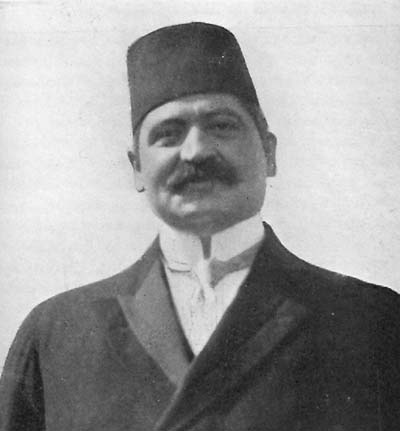 |
Talat Pasha ordered the killing of thousands of Christians in 1915. |
Mehmed Talat Pasha (1872-1921) was one of leaders of the Young Turks, Ottoman statesman, grand vizier (1917) , and leading member of the Sublime Porte from 1913 until 1918. Talat was killed by an Armenian named Soghomon Tehlirian in March 1921 for his role in ordering the massacre of Armenians in his village.
The rally was initially planned to take place on 18 March, and the organizers threatened to enroll 5 million strong Turkish community of Europe.
The police authority in Berlin had stopped the rally on the grounds that it would be a desecration to the memory of all the people killed during the genocide in 1915.
Hundreds Mourn Chaldean Robbery Victim whose Parents were Blocked by Embassy
Courtesy of San Diego Union-Tribune
17 March 2006
By Alex Roth
He arrived in this country a year ago, grateful to have escaped the violence of his home country of Iraq. Yesterday, Firas Eiso, 23, was buried in a Chollas View cemetery, two weeks after he was shot to death, a random victim of a liquor-store stickup.
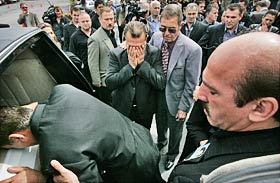 |
| Mourners grieved as the coffin carrying the body of slain liquor store clerk Firas Eiso left St. Peter Chaldean Catholic Cathedral in Rancho San Diego yesterday. Photo by John Gibins.
|
More than 400 mourners, many of whom let out wails of grief at the sight of his casket, attended his funeral at St. Peter Chaldean Catholic Cathedral in Rancho San Diego. His parents, however, were missing. They remain in the Middle East, unable to obtain permission to enter the United States.
Eiso's death has devastated El Cajon's sizable Iraqi Chaldean community, and it's hard to say what infuriates them more: that he was the victim of such a senseless crime or that the American Embassy has thwarted his parents' request to attend the funeral.
According to family friends in San Diego, Eiso's parents drove hundreds of miles from their hometown in Northern Iraq and applied for temporary visas with the American Embassy in Jordan. They simply wanted to attend the funeral, after which they had every intention of returning to Iraq, the friends said.
Their applications were denied for reasons that haven't been made public. An embassy spokesman in Jordan refused yesterday to discuss the case.
“It's made this difficult situation that much harder,” said one of Eiso's cousins, David Barka, 24, of El Cajon. “We just pray that his parents might someday be able to see his grave.”
Relatives said Eiso's father owns an auto shop near the Iraqi town of Mosul and that Eiso was one of six siblings. One brother died in the Iran-Iraq war and another was killed in the Persian Gulf war.
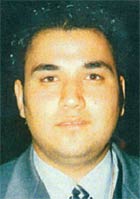 |
Firas Eiso, 23, was gunned down in an El Cajon liquor store on March 1. |
Eiso had been working two jobs in El Cajon – at a car wash and at the liquor store where he was shot to death execution-style during a March 1 robbery. Two men in hooded sweat shirts also killed the store's owner, Heather Mattia, 22, who was buried last week. Each victim was shot in the back of the head. No arrests have been made.
On 16 March – exactly one year to the day after Eiso entered the country from Mexico, seeking asylum – friends and relatives described him as a happy, hardworking guy who was trying to raise money for his family in Iraq. Less than a week before his death, he had been a wedding usher at the church where his funeral was held. Photos of the wedding show him smiling in a crisp three-piece suit, with a white corsage on his lapel.
A hearing on his immigration status had been scheduled for July 19.
“He wanted to get married, have a family of his own and make his family proud,” said his cousin Saher Barka, 17, a student at El Cajon Valley High School.
The funeral service, which came a day after at least 600 people attended a viewing of the body, was conducted mostly in Aramaic, with mourners in black clothing howling in despair as pallbearers carried the white casket into the church at 10 a.m. and out of the church an hour later.
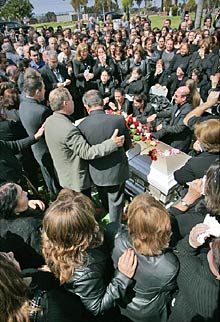 |
More than 400 friends and family attended the service and followed to the burial at Holy Cross Cemetery in Chollas View. |
“Since he has no family here, it is our job to pray for him,” the Rev. Felix Shabi told the packed congregation.
For days, members of El Cajon's Chaldean community have waged a public-relations offensive to persuade the American Embassy in Jordan to grant his parents temporary visas.
The office of Rep. Duncan Hunter (R-El Cajon) contacted the embassy and also the Department of Homeland Security, trying to streamline the process. But the parents' applications were denied by the consulate, and their appeal is still pending, according to Hunter's office.
At the funeral service, mourners posted signs that said “R.I.P. Firas. Please let his family see him for the last time.”
David Barka, his cousin, said he's disgusted with the U.S. Embassy for what he called its lack of “humanity.” But he was more philosophical when the subject turned to the slaying of his cousin, a young man who fled a violent country only to die a violent death.
“His death has a purpose, and that will be played out,” Barka said. “We miss him, we love him – but it's not our right to question God."
Yale University To Digitize Iraqi Academic Journals
Courtesy of Radio Free Europe
27 February 2006
By Nikola Krastev
(ZNDA: New York) Yale University has announced it is beginning a project to digitize part of its vast collection of Iraqi academic journals and make them accessible to scholars worldwide. The project is important because Iraq has a rich tradition of academic publishing dating back to the 19th century. However, today many of the Arabic-language journals are imperiled or not easily accessible.
Benjamin Foster, a professor of Assyriology and Babylonian literature at Yale, tells RFE/RL that there's been such a widespread destruction of libraries and collections in Iraq that it is virtually impossible at the moment for scholarship to function there.
"Most of the major research collections were looted or burned or at least their status is very much in doubt," Foster says. "So, on one hand we have to think about what is the future of thought and culture in Iraq. And we have to remember that Iraq is a very youthful country, the majority of the population is under the age of 21. So we're very concerned about the future of this generation, what kind of materials they are going to use."
So, to partly address this problem, Yale University has launched what it calls the "Iraq ReCollection" project. The effort, with funding from the U.S. government, aims to convert into electronic format approximately 100,000 pages or the complete editions of the 12 most significant Iraqi academic journals in humanistic studies, particularly in history, literature, and politics.
In addition to journals from its own collection, Yale will also scan Iraqi journals from the collection of the University of Pennsylvania. Once scanned, the journals will be electronically archived, made available for free access through the Internet, and integrated into other electronic library systems.
Foster says the periodicals that are going to be digitized are poorly known in the West but have significant scientific value.
"So, on the one hand we want to create a resource which is usable by Iraqis as soon as electronic communication is up and working in Iraq," he says. "And on the other hand we want to facilitate access to Iraqi thought and scholarship over a long period of time -- going back to the beginning of Iraq as independent country -- [to facilitate access for academics in] Europe, in the United States, and Latin America."
The professor says that international interest in the project is high because Iraq has always been a lively intellectual center in the Muslim world. Beyond that, Iraq is the cradle of the ancient Mesopotamian civilization and many of the events described in the Bible's Old Testament took place on the territory of modern Iraq.
Ann Okerson of Yale, who is the "Iraq ReCollection" principal coordinator, tells RFE/RL that the project should be completed by the end of 2007. She says that it is not clear at this time whether the digitization of the collection will continue after that.
"[A] number of agencies have gone into Iraq and have funded rebuilding efforts. The NEH [National Endowment for the Humanities] is only one small player in this. A lot of international agencies have gone into it," Okerson says. "There are various digital library projects that are starting and I think it is going to be important in the next couple of years for everyone to kind of sit back and take stock and say, ‘What is it that we've done in that country and what remains to be done?'"
Yale, one of the world's top universities, has also launched other projects to track down and maintain Iraqi journals that might otherwise become lost. Through a different program in the last two years, the university identified more than 600 journal titles published at one time in Iraq, 350 of those existing in only one known location.
The university has long been a center of study for Arabic literature and Islamic culture. Its Near Eastern Library collection, started 150 years ago, now houses over 400,000 books and is considered to be one of the most important of its kind.
Dutch Writer Follows Footsteps of Nestorian Marco Polo
Courtesy of Radio Netherlands
3 March 2006
By Marijke van der Meer
(ZNDA: Prague) East is East, and West is West, and the twain have met in numerous strange ways over the centuries. Take Dutch writer Tjalling Halbertsma. As an adviser to the president of Mongolia, his own career embodies the rich exchange between Orient and Occident.
In his latest book about China's fast developing West, Halbertsma writes about the Chinese Marco Polo, about an ancient Roman garrison stranded in the middle of China, and about white people who inhabited what is now China 3000 years ago.
Marco Polo in Reverse
Ulrich Boser
US News & World Report
23 February 2004
In the spring of 1288 a curious throng packed the Vatican to celebrate Easter and glimpse a visitor from the far side of the world. Rabban Sauma, a Mongolian Christian, had braved a 7,000-mile trek from Beijing. But when he received the Eucharist from the pope, he broke down and sobbed. The crowd's loud amens shook the church.
Sauma was the Mongol Empire's first envoy to Europe, just 50 years after Mongol armies were repulsed at the gates of Vienna. Much of his diaries have survived, giving a unique perspective on the West. "Sauma is a reverse Marco Polo," says Morris Rossabi of the City University of New York, author of Voyager from Xanadu: Rabban Sauma and the First Journey from China to the West. And while Polo set out to find trading opportunities, Sauma aimed to forge an alliance to drive the Muslims from the Middle East. It was "an extraordinary example of early geopolitics," says Rossabi.
A calling. Sauma's mission began as a pilgrimage. Born near Beijing, he was a cleric in the Nestorian Church--now a small sect in Iran and Iraq but then flourishing in China. In 1275, in his 50s, Sauma and a disciple felt the call of the Holy Land. They left for Jerusalem without meeting Marco Polo, who reached the Beijing court of Kublai Khan, the Mongol ruler, about the same time.
Sauma's party crossed the Taklimakan Desert in western China on camels--"a toilsome and fatiguing journey of two months," he wrote. The trip from China to the Middle East took four years in all. But fighting near Jerusalem kept him from visiting, and he lingered in Baghdad.
In 1287 Iran's Mongolian ruler tapped Sauma to lobby Europe's kings for help in conquering the Middle East. Sauma shared mass with Edward I of England, visited King Philip IV in Paris, and stayed at the Vatican. His descriptions of Italy still resonate: It "resembled paradise; its winter was not [too] cold, and its summer not [too] hot. Green foliage is found therein all the year round."
Yet he failed to broker a deal between Europe and the Mongols and returned to Baghdad, where he died in 1294. "If Sauma had been successful, history would have been very different," says Jack Weatherford of Macalester College. "Europe would have ruled Jerusalem and Egypt, and they would not have sailed around looking for a new trade route," he says. In other words, no Vasco da Gama, no Columbus--and a world as strange to us as Europe appeared to Sauma.
|
|
Halbertsma travels across China in the footsteps of a 13th-century monk named Rabban Sauma, the first person from China known to have visited the courts of Europe. Sauma was a Nestorian Christian, as were several members of the family of Kublai Khan, emperor of China at the time. The monk set out for Europe from Beijing around 1275 AD, at almost exactly the same time as Marco Polo is said to have headed for China from Venice.
The fact that Marco Polo never mentioned such things as the Great Wall or tea has led some to suspect he may never have been to China but simply retold the tales he had heard from others.
However, Rabban Sauma's travels to Europe, including his meeting with the pope and with the kings of England and of France, are documented and verified. "Yet he was forgotten by the rest of the world. And maybe that says something about how we view the world", says Halbertsma.
European origin
Following Sauma's 13th-century itinerary, Halbertsma visits old forts and desert towns with a unique but little-known history. In one tiny place near the town of Yongchang in the middle of China, DNA studies have shown that some of the people here are of European descent.
British sinologist Homer Dubs theorised in the 1950s this may have been the site of a settlement inhabited by ancient Romans. They would not have come here as conquerors but as prisoners of war taken by the Parthians around 50 BC and forced to fight in the East. As Halbertsma explains, "It is an area where the East and West have met for centuries. There are frescos in the Taklamakan desert signed by a painter named Titus, and they show angels in a western style."
Urumqi mummies
Farther to the west in Xinjiang province, archaeologists have found the well-preserved remains of blond and bearded Caucasian people still wearing the western fabrics they were buried in 3000 years ago.
These so-called 'mummies' of Urumqi are sensitive objects, because they seem to indicate that the original inhabitants of Xinjiang province were Indo-Europeans.
This is political dynamite in an area of China whose people are predominantly Uighurs but whose central Asian and Muslim culture is slowly being replaced by the Han Chinese.
Because of the oil-rich region's enormous strategic and economic importance, China is building new highways and towns and industries in the west. Ethnic Han are settling in these areas in such large numbers that the original cultures and languages can only survive with difficulty.
"In the debate about human rights in China we have shifted the debate entirely towards the economic progress China is making in the cities in the east", says Tjalling Halbertsma, "and we are not focusing on this other side of economic growth."
|
|
Surfs Up!
Your Letters to the Editor
|
What Kind of Government will Iraq Have?
Sargon E. Sapper
Chicago
Can you picture it? Iraq is weeks or even days away from having a new government. The newly elected Iraqi National Assembly has the historic responsibility of examining the nominated Prime Minister’s post-election agenda regarding the future of Iraq, and exercising its power in accordance to the new constitution.
Winter 2005 Issue of the Assyrian Star |
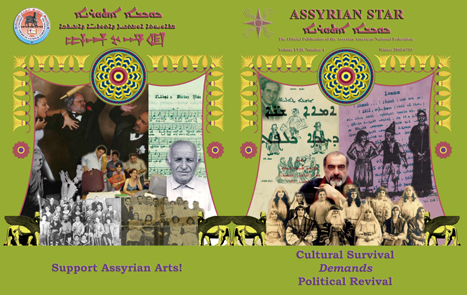 |
64 informative pages will be available in a few weeks
New 2006 subscribers receive the Theater Issue as Bonus
Subscription Rates:
USA ... $30
Canada ... $35
International ... $40
Institutional Subscribers ... $55
Send your check today to:
Assyrian Star
P.O. Box 2880
Worcester, MA 01613
Questions? theassyrianstar@aol.com
(Why not make a gift subscription to a loved one or friend?) |
Members of the Assembly need to know that they are elected to represent all citizens of Iraq. Additionally, the new Iraqi government needs to know that if it maintains the course of corruption of the present government it will be held fully accountable for its actions. When called upon to appear before the Assembly, the Prime Minister and his cabinet members should be more forthcoming about their post-election agenda for the future of Iraq. Assembly members should not only raise specific questions, they should demand detailed and accurate answers. This is no simple task, and will require a sustained effort and focus in order to gain valuable insight into what the new governing body actually hopes to achieve. No more blank checks for anyone in Iraq!
I believe, beyond any reasonable doubt, that the freedom loving people of Iraqi will take the necessary steps to set the record straight, do what is right, and hold tyrant enemies accountable for their actions. Need proof? Look around. Saddam Hussein is in prison, on trial for his horrific crimes against humanity. Europeans are unwilling to open up and accept Turkey as a member of their union.
Essentially our thoughts control our actions. But in this case, regime change, elections, and even a new constitution under occupation have failed to change Iraq for the better. Time will tell if the United States and Iraqi government can learn from past mistakes and readjust. To do so, they will literally have to change the way they think and act in Iraq. It can be difficult to override the very thoughts that control our actions, but we have to understand what is holding the Iraqi groups from being united the way they want to be- united as equal members of an Iraqi national unity, not by being lost within a lack unity. That is what they want. And what’s holding the Iraqi people back from performing in the way they want? The patriots, the freedom loving people in Iraq, have been asking themselves that very question. All too often they focus their blame on foreigners. True enough, that has usually been the cause. But, sadly, they never think to look for the power to become who they want to be where they are most certain to find it- inside themselves.
Now Iraq sits on the brink of a comprehensive civil war. If civil war erupts, Iraq will be torn apart along the sectarian lines between its religious and ethnic factions. The sovereignty of Iraq could be jeopardized forever. Haven’t the Iraqi people had enough corrupt governments, tyrant rulers, and puppet assemblies? What they need now is a reform government, fair leaders, and an honest and transparent assembly.
New Executive Board of AAA of Southern California
William Warda
President
Assyrian American Association of Southern California
During a meeting of the General Membership in January a team of new administration and the board of directors was elected as care takers of the Assyrian American Association of Southern California for the next two years. The elected people are:
| President |
|
William Warda |
| Vice president |
|
Melis Lachin |
| Treasurer |
|
Victor Orshan |
| Controller |
|
Romina Arvakhi |
| Board of Directors |
|
Nahrin Lachin |
Jenny Badal |
Edwin Afshalimi |
Fredrik Ayoubkhan |
| |
|
Arbela Orshan |
Beloos Bethishou |
Edwin Atniel |
|
The extent of their success in helping the Assyrian Center and the community at large depends on how much they will be supported by the rest of the Assyrians in the region.
From time to time every nation or community needs to asses its situation and find out which way it is headed, to make proper corrections, so that it will not end up at a destination it does not want to be. There has not been such assessment of the Assyrian situation or attempt to plan their future for lack of an effective national leadership and the apathy of the general population. Consequently we are scattered in all directions each living as an island disconnected and isolated form others, this can hardly lead to a positive outcome. When things are left alone usually they go from bad to worst.
The most important function of the Assyrian center is to bring together all Assyrians and encourage their unity and solidarity. There are many signs that the Assyrians community, at least in the Southern California area, is not doing well because its members are scattered in a vast region with long distances in between them impeding their social interaction. Such signs of disintegration are especially evident to the directors of the AAASC who monitor the state of our people. On average we send about 1000 flyers twice a month to the Assyrian households inviting them to various events promoting social and cultural activities such as: seminars, book exhibits, Assyrian choir, Assyrian language classes, parties and picnics but only a small percentage of the population bothers to attend. A scattered people who have no desire to come together at least once every so often, to reassert their unity, solidarity, and interest in their shared social and cultural heritage can hardly be assured of a stellar future for their community.
Some attribute their non-participation to the fact that the Association hall is not as beautiful as they want it to be or the Association property is not in a wealthy neighborhood . It is hard to believe that any Assyrian is willing to abandon his or her community or culture for such reasons. This shows a lack of concern for the survival of their heritage which is passed on to the younger generation.
The survival of our people for the last 2500 years has been due to their love and dedication for each other. The 8th century Givargis Bakht-Eisho who was a court physician for the Caliph al-Mansour and family, after a long practice, decided to retire and live the rest of his life in an Assyrian village in northern Iraq with his family and friends. The Caliph who appreciated his services invited him to stay in Baghdad and become a Muslim so that he too can go to heaven. Givargis replied “I would rather die with the religion of my fathers and go where they have gone. That is where I want to be, whether in paradise or hell.”
If the Association is not beautiful or is not in a great neighborhood it means our community has neglected it for too long and the solution to this problem is not to abandon it rather than helping to make it a better place. The few individuals who have been elected to administer the Association can not invest in more expensive property without the support of the community at large. No people can survive if they are not willing to inconvenience themselves for the sake of their shared culture and heritage. This was undoubtedly the message which President Kennedy wanted to express when he said: “Don’t ask what your country can do for you, ask what you can do for your country.” In addition to our responsibility to our adopted country we are equally indebted to our community if we are interested in its survival.
Thank You the Honorable Mr. Bet-Kolia !
Ninoos Benjamin
California
Heart breaking news of extreme living condition, social and economic hardship of friends and family living in Iraq and Iran are now common. The news to the contrary, therefore, are rather rare and yet do exist and here is one of them.
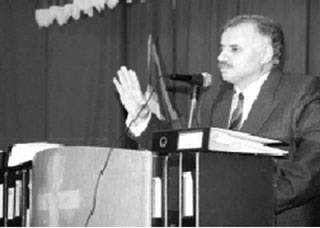 |
The Honorable Yonatan Bet-Kolia, the representative of the Assyrian people in Iran's parliament (Majlis). |
In Los Angeles, I recently met a brave Assyrian lady named Nelie Bakerians. First, she made it very clear that she is a one hundred percent Assyrian and in spite of her last name, she is not Armenian. She was in Los Angeles for visiting her family and we were fortunate that she accompanied them for a friendly gathering in my residence.
In talking to Ms. Bakerians, it was most refreshing to find her a very direct and straight forward person, a character although common among the Assyrians living Iran and Iraq it is now becoming extinct and uncommon among the Assyrians in the Western countries.
Ms. Bakerians told us of the rather large Assyrian community that now live in a newly built suburb of Tehran, a place called Shahrak Karaj-Fardis. In this location, according to her, Assyrians with the help of their representative to the Iranian Parliament, Honorable Younathan Bet-Kolia, have received a large parcel of land for free and they have built an Assyrian Center that serves as the main hub of social and cultural activity for the Assyrians living in this community. In fact, she expressed that with the Assyrian Center in Fardis, Assyrians in this suburb have rather pleasant living condition and they do not need to face the challenges posed to them in the larger metropolitan city of Tehran.
In her further elaborations, Ms. Bakerians told us of many efforts and contributions made by the Honorable Younathan Bet-Kolia in helping Assyrians both at individual and collective levels. She was witness when an Assyrian had faced personal hardship in Urmia and Mr. Bet-Kolia had made special trip to the city to reverse the predicament faced by his fellow Assyrian. She went on and on telling us of numerous contributions that this brave and nationalist Assyrian, Mr. Bet-Kolia, has contributed to the Assyrian community in Iran.
Therefore, I am writing this letter to Zinda Magazine to publicly acknowledge the service and contributions made by the Honorable Younathan Bet-Kolia and to extend my and the Assyrians’ appreciation for Mr. bet-Kolia’s use of his position, his office and his personal relationships in the service of his fellow Assyrians and the Assyrian communities in Iran.
May God bless all Assyrians in the service of their nation and the fellow Assyrians.
Wanted: Assyrian Electronic Documents
Peter BetBasoo
Chicago
I am currently developing a word processor that will have very high level of support for Assyrian (and English, of course, as well as Arabic and Hebrew).
At this point I am working on the Assyrian spell checker. To do this I need all the Assyrian words I can get to put into the spell checker's Assyrian dictionary.
If you have Assyrian documents in electronic form (documents of ANYTHING -- in Eastern, Western, Swadaya, Turoyo, lishana atiqa/ktobonoyo) please send them to me. I prefer fully vocalized documents (i.e., with full vowels and diacritical points).
If your documents are in Microsoft Word, just send them to me in Word files. If you are using a different word processor, please save your documents as plain unicode text files and send me those files (they must be in unicode).
Send your documents to keepa@ninevehsoft.com
Yonadam Kanna in South Africa
Emanuel Kelaita
Dubai
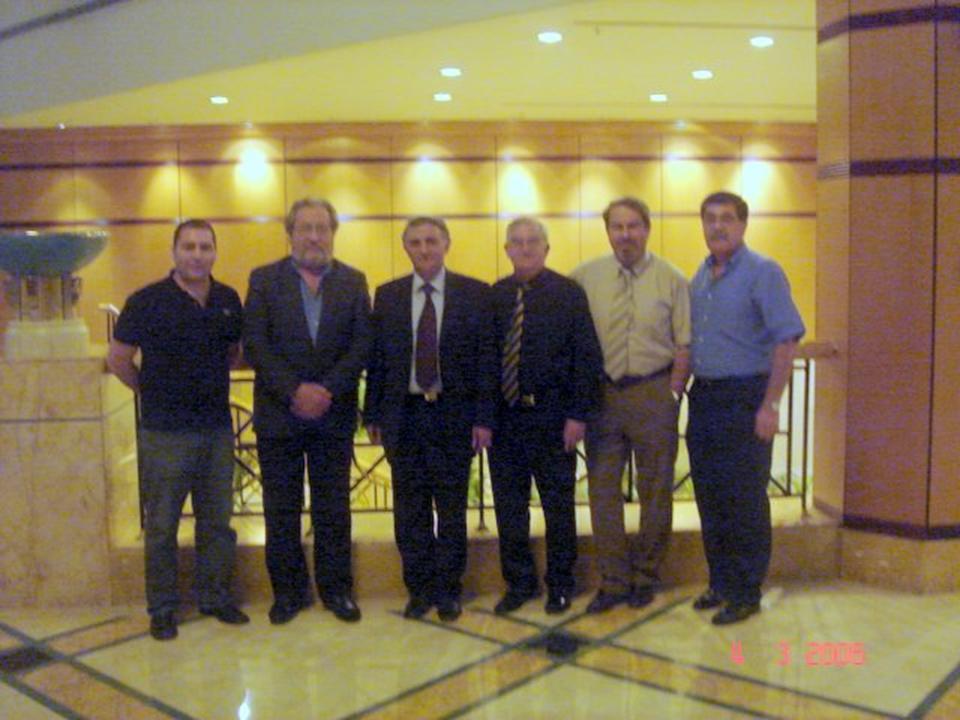 |
| R to L : Toma Rowel Youkhana, Aprim Shapera, Emanuel Kelaita, Younadam Kanna, William De Eiel, Roy Kelaita – Dubai, 4 March 2006. |
I was a bit surprised to read in AINA on the 10th of March 2006, about an Iraqi constitutional delegation visiting South Africa’s. The article mentioned that the Iraqi delegation represented the country’s three main communities the Shi’ites, Sunnis, and Kurds. Just for your information Rabi Yonadam Kanna was a part of this delegation, and they happened to stop over in Dubai on the 4th of March 2006 at night. I had only been informed about an hour earlier about their stop over in Dubai, a few Assyrian individuals including myself hurried and greeted our Great and democratically elected LEADER in Iraq, Mr. Yonadam Kanna, and his delegation in the hotels lobby.
Mr. Yonadam Kanna excused himself from his collogues and joined our Assyrian table which included, Aprim Shapera, William de Eiel, Toma Youkhana, Roy Kelaita, and me. We had a nice chat which lasted until midnight. The delegation was leaving the next morning to South Africa.
Human Race Walkathon Benefits Assyrian Aid Society
Assyrian Aid Society
Santa Clara Chapter
California
The Santa Clara Valley Chapter of the Assyrian Aid Society of America is once again participating in the Human Race Walkathon. This is a benefit event where thousands of people gather every year to support charity organizations of their choice. Last year we had over one hundred people who either participated or donated money to this event. The event raised over $15,000 which were used by the Assyrian Aid Society of Iraq to support Assyrian villages and provide for housing, transportation, medical and educational needs of the Assyrian people in our Homeland. With your help we can make this year's event another grand success.
You can participate in this great cause by either walking 5K on behalf of the AAS or making a pledge to sponsor our participants. National Semiconductor is again sponsoring our chapter this year and will match your donations. The Walkathon will start at 8:00 am on Saturday May 13th, 2006 at the Shoreline Park located on 3070 North Shoreline Boulevard in Mountain View. Your support is crucial to preserving our national heritage in Bet-Nahrain.
If you would like to sponsor this event, please make your check payable to the Human Race and mail it to the address below by April 10th. Your donation is tax deductible. For more information regarding the registration or making pledges, please contact Jermaine Soleymani at (408) 460-4957 (jermaine.soleymani@nsc.com), or Nora Joseph at (408) 595-8516.
|
|
Surfer's Corner
Community Events
|
U.S. Premiere of Assyriska Documentary in Los Angeles
Tanya Benjamin
Media Contact and Management
TanyaBenjamin@sbcglobal.net
ASSYRISKA: A National Team Without A Nation
A five part documentary film directed by
Nuri Kino & Erik Sandberg.
Part III competing for the Golden Palm Award as a finalist at the Beverly Hills Film Festival
Thursday April 6, 2006 – 8:00 P.M. & Saturday April 8, 2006 – 3:45 P.M.
CLARITY THEATRE
100 North Crescent Drive
Beverly Hills, California 90210
(Running time: 30 minutes)
Tickets are selling out quickly so please make your reservations (click here) or call 310-779-1206 for festival information.
ASSYRISKA: A National Team Without A Nation is the story of an Assyrian
soccer team from Södertälje, a small town in Sweden that was able to achieve
international stardom when against all odds as the first ever immigrant team in
Europe, it reached the national premiere league. It made headlines worldwide.
Marking its American premiere as a finalist at the Beverly Hills Film Festival,
episode III depicts the current struggle of the Assyrian people who are a nation
without a country in their quest for recognition of the Genocide perpetrated against
them in the Ottoman Empire during WWI.
This third episode that originally aired on Sweden’s Public Service Network,
depicts the team’s struggle to be recognized as a Swedish soccer team. But beyond
that, the team pushes to cause change in both the Swedish and Turkish
governments’ attitude to accept and recognize the “forgotten” Assyrian Genocide.
This move triggers diplomatic implications. Also featured are ASSYRISKA
supporters returning to their homeland of Southeast Turkey in an attempt to
reclaim their now occupied territories.
Nuri Kino, one of the two directors of ASSYRISKA, will attend the Beverly Hills
Film Festival. Nuri Kino’s journey as an Assyrian-Swedish freelance journalist
and documentary filmmaker began in 2000 but his extraordinary achievements are
by no means those of a novice. A five-time nominee for the Swedish Pulitzer
Guldspaden, he received three for Best Investigative Journalist in 2001, 2003 and
2004. He received the Swedish Television and Swedish Radio’s Ikaros Prize for
Best Public Service Journalism and became the Role Model of the Year for
Swedish Journalist Students at Sundsvall University in Sweden. In 2002, Kino
was nominated as a finalist for both the Great Journalist Prize and Save the
Children Prize for journalists. He also serves as a Jury Member for the Humanity
of the World Documentary Film Festival. Filmography: The Cry Unheard, 2001;
Insider-Pedophiles, 2003; Insider-Quacks, 2003; ASSYRISKA: A National Team
Without A Nation, 2005.
All interviews with Nuri Kino arranged on request.
Last Call for a Discounted Set on Bedjan’s Homilies
of Jacob of Sarug in East Syriac
DAVID YOUKHANA
|
|
ARIZONA
Real Estate-Relocation-Investment |
|
Broker / Owner
Certified Commercial Sales Specialist
Babylon Realty
Glendale, Arizona 85310
Click Photo For More Information |
602-410-9555
|
|
Gorgias Press LLC
46 Orris Ave., Piscataway, NJ 08854
Tel. +1 732-699-0343
Fax +1 732-699-0342
orders@gorgiaspress.com
This is a last call to obtain the Bedjan-Brock edition of the Homilies of Jacob of Sarug (6 volumes, ca. 5,000 pages) at the pre publication price.
The Homilies of Jacob of Sarug, published originally by Bedjan in 1902-1010 in East Syriac Script, are not only very hard to find in the antiquarian market, but are lacking in many academic libraries. The 5-volume set had to be gathered by Gorgias Press from three different scholars who owned incomplete sets. Gorgias’s edition, edited by Sebastian P. Brock, includes a new sixth volume. The Gorgias edition includes the following new material:
Eleven additional homilies taken from Bedjan’s S. Martyrii qui et Sahdona quae supersunt omnia (1902)
Five additional homilies not published by Bedjan, and published here for the first time.
A 50-page biography of Paul Bedjan (1838-1920) by H. Murre Van den Berg.
Index of First Lines (including first lines of unpublished homilies found in manuscripts of Middle Eastern and western libraries) by SPB.
Index of Modern Translations by SPB.
Index of Manuscripts used by SPB.
Index of Biblical Passages commented on by SPB.
Index of Names and Subjects by SPB.
Gorgias has undertaken this huge project under tremendous cost (the book is about 5,000 pages!), and given the market for this book is forced to price it at $1200 (still, much cheaper than what other publishers would have sold it for!). But in order to help scholars and students obtain the book, it is now being offered at a pre-publication price of $750. The full price will take effect on March 20, 2006.
Here is a link to order the book at the pre publication price: click here.
Kha b'Neesan Celebration in Los Angeles
Assyrian American Association of Southern California
North Hollywood, California
We wish a happy Kha b’Nissan Assyrian New year to all, with hope that next year will be more peaceful and prosperous for our people scattered around the world. It is a time to celebrate our existence, reflect on our past and future.
May our heritage which has helped Assyrians survive and has united them not only around the world also across the centuries live for ever.
We hope that you will celebrate the New Year with us at the Assyrian Center to reaffirm our national unity and solidarity.
Yourik and his band
play exciting dancing music in Assyrian, persian and western.
Best restaurant quality dinner will be served including:
Six different Appetizers
Two kinds of Rice
Two different Koresh types
Three types of Kebobs; Steak, Chicken and Koobideh
Soft Drink, Tea and Coffee
Desert; Pastry, Ice Cream and six mixed Fruits
Seating is limited, buy your tickets early. Ticket price $45.00 dollars per person, sold at the Assyrian center, Sundays March 19th and the 26th between 2:00 to 5:30 p.m.
To purchase your tickets please call 818.506.7577.
|
|
The Kurdish Latest Propaganda: Boosting Aghajan and Hariri and Undermining the True Assyrian Representation
Fred Aprim
California
Recently, a well-organized pro-KDP campaign has hit the Internet and many Assyrian forums. This planned campaign coincided with the release of Ishtar TV as a Satellite TV station and as houses and few churches were delivered to certain Assyrians and Christian sects in northern Iraq.
This campaign has a purpose of course, which, in essence, is to present the Kurdistan Democratic Movement (KDP) and Kurds as guardians over the Assyrians. While it is almost impossible for the Kurds to win the hearts and support of the Assyrians directly due to the Genocide they committed against Assyrians for centuries, the Kurds pushed its members, such as Nenif Matran Hariri, the KDP advisor for Christian affairs, and Sargis Aghajan, Deputy Prime Minister of the northern Iraq Kurdish regional government, to be their front image to the Assyrians. Mr. Hariri, on one side, is not shy to express his insolence on his site (www.assyriansofkurdistan.com) when he claims basically that Assyrians have Barazani as their savior and then he marginalize every other Assyrian institution or organization. On the other side, the KDP and Barazani appointed Mr. Aghajan to be in charge of the construction of the new houses, churches, Satellite TV station, bridges, and other projects in selected Assyrian regions.
Now that Ishtar TV is on the air and houses, churches, etc, have been delivered, it was time to present the man who allegedly is the reason behind these projects and build him up for the position that he is groomed to occupy; the leader and protector that the Assyrians need. This, ultimately, is a step to undermine the leadership of the Assyrian Democratic Movement (ADM). The campaign is to present Aghajan as an Assyrian hero for "his" reconstruction projects in northern Iraq post 2003 Gulf War.
There are few important points that the reader must consider, including:
1. While the well-financed and high tech Ishtar TV broadcasts programs in Syriac, it does broadcast in Kurdish and Arabic as well. A newly established TV station must win the hearts of the people to be trusted. It is natural that it must broadcast good quality and trust-worthy programs in Syriac so that Assyrians would watch it. However, the long-term plan of the station is its affect on children and the youth who watch the Syriac programs but will watch Kurdish propaganda as well. In the Kurdish segment, KDP leadership is presented as civil, democratic, humanists, just, and open-minded. Additionally, the real purpose of Ishtar TV is to undermine Ashur TV. The Iraqi constitution institutes the cultural rights of the Assyrians; therefore, the Assyrians can do without a channel infested with Kurdish programming and propaganda. The two Kurdish rivals KDP (Barazani) and PUK (Talabani) have their own satellite TV stations, why do they need to broadcast from a presumably an Assyrian station? If Assyrians want to hear Kurdish, they would watch the two Kurdish satellite stations.
2. Sargis Aghajan is a well-known member of the KDP. The KDP is a Pan-Kurdish organization with well-known political and national goals. Its main goal is to establish the illusive country of Kurdistan that never existed in history. Most importantly, this new country will be established over many Assyrian historic lands. Aghajan's obligations, as a member of the KDP, are towards the Kurds and not the Assyrians of Iraq. Were the obligations of Tariq Aziz towards the Assyrians of Iraq or the pan-Arab Ba'athist movement? One cannot fight for the rights of the Kurds and those of the Assyrians at the same time because there is an obvious conflict of interest on certain important points. The bottom line is, Barazani appointed Mr. Aghajan; he is not an Assyrian representative, period.
3. The KDP and the Kurds are insinuating and making the world to believe that the money spent in the Assyrian regions is Kurdish money and that they are doing the Assyrians a great favor. The fact is that the Assyrians were assigned $33 million in the Iraq reconstruction plan; however, the United States handed the power to distribute this money over to the Kurds. This money is neither Kurdish money nor Aghajan's money; it is Assyrians' share from the Iraqi oil proceeds. This money should have been handed over to Assyrian representatives in Iraq and allowed them to oversee its distribution with supervision if required. Furthermore, out of the $33 million, around $3 million is accounted for so far only. The rest of the money was perhaps pocketed by the KDP. Finally, the collapse of Nahla Bridge, which was supervised by Mr. Aghajan and constructed less than a year ago, raises more questions about the quality of the material used by Kurds in the construction. Under any civic law in the world, those in charge of building Nahla Bridge that collapsed should be questioned in the court of law.
The Iraqi national elections were held only three months ago. In those elections, the people did cast their vote and made their choices. The Assyrians have an elected representative in parliament, who is Mr. Younadam Kanna. The KDP must respect the Assyrians' decision and choice. Barazani is at liberty to appoint anyone he desires to any post in his local government. However, Barazani must understand that these appointees are not Assyrian representatives and they will never be. If Barazani and the KDP are serious about their justice, freedom, and liberal claims, they should honor the decision of the people, stop interfering in the Assyrians' internal affairs and end their wicked and evil ways of dividing the Assyrian people.
As people, the Assyrians and the Kurds could set an optimistic and healthy example of coexistence in northern Iraq. However, this positive example must be created based on true democratic values and good will. The KDP is practicing neither at this point.
Building Bridges with the KDP
Eva Shamouel
United Kingdom
Iraqi Kurds are on a roll. Why wouldn’t they be? They suffered for decades under a ruthless dictator and were victimized and persecuted because of their ethnic identity. Although the implementation of a safe haven since the Gulf war has given them a taste of freedom, economic development and democratic rule, the dream of an independent state has never been more tangible. But how sad it is that so often in history the victim of oppression often becomes the oppressor.
The war in Iraq may well have left the majority of the country in turmoil and on the brink of civil war yet the North enjoys a disproportionate rate of economic and political development. The Kurds very much understand that their empowerment is dependent upon the continued support of Americans whose vested interests lie with Iraq’s oil and its strategic position in the Middle East. In return, the Americans fund redevelopment projects and assign a proportion of money to be spent on the Christian minority.
Assyrians are not so proud as to reject help just because it is coming from a Kurd or an Arab. At the end of the day they have families to raise and want to live in peace and comfort. However, what is the price for this? We have suffered too much and sacrificed too many lives throughout our history to accept favours blindly and not look at the motives behind them. Our political naivety and our simple hearts may have caused us to be stung in the past but just like the Kurds earned (and deserve) their rights, we deserve ours. It’s not cynical to say that socio-political favours are hardly ever bestowed with no conditions attached. If in the long-term it surfaces that the vulnerability of our people was being abused then history has repeated itself. It needs to be clarified to us if we are regarded as equal or subservient. I fear that the answer will only come when the Americans leave and the turmoil of the rest of the country spreads to the North or when the Kurds finally succeed in establishing an independent state.
If we are equals and if the KDP have the interests of the Assyrians at heart why not consult those organisations that have the most experience in the field of reconstruction of schools and villages such as the Assyrian Aid Society? Wouldn’t this give more legitimacy and accountability to charitable projects and show trust towards respected Assyrian organisations? Why not consult the only elected representative of a purely Assyrian party, Yonadam Kanna, who is himself Chairman of the Services and Reconstruction Committee of Iraq? His experience, astute diplomacy skills and political pragmatism would have probably advised them that it was not the best time to build grand churches when the country is overrun with religious extremism.
The aim of the KDP is to set up a state called Kurdistan. The Assyrian Democratic Movement is a huge thorn in the side of the Kurdish authorities as an Assyrian autonomous administrative region in the Nineveh plains would loosen their grip on the new-found dominance which they enjoy. The support the ADM receives from the ChaldoAssyrian community in Iraq is overwhelming and its reputation for pro-activeness through armed resistance, humanitarian projects and campaign for democracy and recognition of ethnic rights is unwavering.
Since 2003, the KDP in particular has been implicated in a series of actions designed to alienate and annihilate not just the Assyrian Democratic Movement but the whole principal of Assyrian national aspirations and the argument for an autonomous administrative region. What they are doing behind the scenes completely contradicts the image which they are trying to portray.
They have tried both the carrot and the stick approach to take away our national aspirations. The stick was intimidation – particularly during the first election – when more than 150,000 ChaldoAssyrians, Yezidis, Shabaks, and Turkomens were excluded from voting. This was obviously a scheme to marginalize their representation of non-Kurdish minorities in the new Iraqi National Assembly.
This technique caused outrage and provoked world-wide protest. The KDP is increasingly trying the carrot approach in the form of a new Assyrian/Kurdish/Arabic TV station and the reconstruction of a selection of villages. They seem to want to show the world an image of how a future Kurdistan would look for all its inhabitants. The image is one seen through rose-tinted glasses – almost a utopian, dream-like existence with mutual respect between all cultures. It seems to be a façade to undermine and dismiss the calls for Assyrian autonomy made by such organisations as the ADM.
An example of this is when Dr. Bob Spink, a member of the British Parliament and a close ally and advocate of Kurdish rights, recently visited Northern Iraq on a “fact-finding” mission. He met with Mr. Romeo Hakari, Mr. Sargis Aghajan and other “Christian” members of the KDP. Although he was well aware of the ADM he did not meet with any of its members.
He said “I was keen to get the views of the Christian community. I spoke to Christian MPs, including the Speaker, Mr. Adnan Mufti, and the Deputy Prime Minister, Sarkis Aghajan Mamendu … I also visited the Christian community of Ankawa and spoke with ordinary Christian people, both Iraqis and expats from this country and from America, who have lived there for years. Such people are supportive of the Kurdish Regional Government and are pleased with progress. They are concerned at what they see as propaganda by people largely from outside their communities in Iraq who call for an autonomous administrative region for the Christian communities. That is being sold as a safe haven, but from what I saw and heard first hand from the Christian people in Iraq, and from their democratically elected representatives and community leaders, the concept of a safe haven is wholly inappropriate. Christian MP Romio Acarie … said: “Comparing life under Saddam with life under the KRG is like comparing Earth with Heaven.”” (House of Commons Hansard Debate, 25th October 2005, Column 51WH).
 |
A bridge built by KDP in the Nahla region. |
In conclusion, here is a photograph of a bridge built by the KDP in Nahla region. Although it is less than a year old, it is crumbling and about to collapse. It was made of cheap materials by unprofessional workers because its short-term impact was more important than its strength and sturdiness. Although the bridge is a very small example it can be seen as a metaphor for the ambiguity of the KDPs current campaign. Are they interested in a short term impact for their own motives or are they genuinely trying to build foundations for a stable future?
I may have got it wrong. If it is the case that the KDP have turned a new leaf and have seen the error of their ways and wish to make up for their past atrocities then I sincerely apologise. If Christian (as they prefer to be known) members of the KDP have suddenly rediscovered a love for their ancestry and wish to dedicate their energy and efforts to reversing the bleak future of Assyrians in Northern Iraq, again I am sorry for my inaccurate analysis. But if my gut instinct is correct and our people are being bought in exchange for giving up national aspirations then we can only sit back and wait to pick up the pieces of a crumbling dream.
The Current Assyrian Politics: Failures and Hopes
Dr. George Habash
United Kingdom
During the last general elections an infant Assyrian political group, the Assyrian General Conference AGC, made its first thrust into Assyrian politics and national politics of the land in a mere few months after its inception.
At its preparatory assembly held in Baghdad 5-7 August 2005, the Conference reached its resolutions to fight the coming national elections with bold programmes emphasising in those resolutions the adoption of Assyrian national identity (the indigenous people of the land) and determination to establish an Assyrian autonomy in Nineveh plain in a federal republic.
The Conference outlined its position emphasising the unity of the land with equal citizenship for all. It reiterated its belief in reversing the ethnic cleansing of Assyrians from their heartlands according to the demography of 1921 when the state was first formed.
Among others, the Conference demanded a secular state that will teach the Assyrian language, as national and historical entities that will be recognized in the national flag of the state and facilitate the return of the Assyrian expatriates.
In intra-Assyrian level it sought that all Assyrian men and women gifted and otherwise should work together in building the requirements of the Assyrian autonomy in various fields and disciplines.
Within a few months of its formation and participation in the last national elections it has made strides by gaining reasonable numbers of votes. Although it has failed to win a single seat but it has triumphed in making Assyrian nationalism’s presence felt and real.
For the Assyrian General Conference to make a greater impact in the future’s elections it has to study the weaknesses it adheres the time being and move with enthusiasm to achieve better results in the future:
- Its failure to win a single seat was due that the Conference is just a newly established political organization and therefore it lacks popularity with the Assyrian voters.
- The Conference must move in all directions horizontal and vertical. With the first to build power base with popular support and with the second to build hierarchal cum pyramidal structure to impose itself.
- The Conference must establish offices in our heartlands in the towns and villages and recruit native people from each town or village.
- The Conference must work in inter-church recruit and will not succeed in picking members from one church only.
- The Conference has to redefine itself and transform it into a proper political party because the wording of the Assyrian General Conference is not attractive.
Prior to the formation of the Assyrian General Conference another political group the Assyrian Democratic Movement ADM came into the forefront and contributed to the politics of the land on behalf of the Assyrian community.
The Movement was formed on 12 April 1979 as a ‘democratic and political organisation’ working for a free and democratic country that will recognise the Assyrian national rights. This is the national charter proclaimed by its founding fathers.
According to its web site it began its struggle in 1982 but came to the fore in 1992 after the political changes in the north of the country. It works for the unity of our people (Chaldeans, Syriac and Assyrians as it describes them). It believes in the rights of people for self-determination (here a reference to the Kurds) and works to defend the welfare of our people worldwide and their aspiration in the homeland.
Despite the long years of the Movement it has failed to advance the Assyrian national cause its founding fathers had yearned for. In its past elections’ manifesto it has failed to adopt the establishment of Assyrian autonomy as its main political objective and also stuck to the artificial ChaldeoAssyrian identity instead of pure Assyrian nationalism.
Despite its long history of political existence it has managed to grab only a single seat in the last elections despite standing for election in all 18 provinces. The latter tactic was just an arrogant gesture to prove that the Movement is universal not localised only.
I once have thought that the Movement would succeed in steering our people towards their objectives but once in minor office with ‘lucrative’ income following the retreat of the Big Brother it has become blinded and over-reached itself.
In the last three years the Movement has abandoned its ‘struggle’ and became complacent with that single seat and single cabinet office and headquarters in the notorious Fedayeen building of the Big Brother. Add to this its obsession with itself and the disparaging of other Assyrian political organisations as though that the Movement is the sole representative of our people.
The Movement has lost its movement and in the past three years has failed to advance the Assyrian national cause one inch. The Movement is in need of revamp or shake up otherwise it will be left behind and lose the limited credit now considers it has.
The Movement which is not able to ask the state about the demands of our Assyrian people will cease to be their representative. It can not rely on a few of its members or outsiders to speak for our people while its representative cowers in the corridors of power.
For example should the civil war become a reality as I do think it is, the Movement has no plans for what our people should do? When they kill our people the Movement say they are killed and when our people leave the country the Movement say they left and when their territories violated the Movement say they are occupied and when our churches are bombed the Movement say they are bombed. It does not raise a finger nor give a solution as though it is told to do that and not go beyond.
There are some who believe that the Assyrian Democratic Movement is neither Assyrian nor Democratic or Movement. So what is left and why all this fuss, brag and hallucination? In politics, parties arise and parties fall because people exalt the worthy and abandon the unworthy.
In conclusion I see a vision for the Assyrian General Conference should it adopt the five points above but I can not see a future for the Assyrian Democratic Movement unless the latter wakes from its dopey state and approach the Assyrian General Conference and perhaps in coordination or in one front they can rescue the Assyrian politics from its current affairs of inadequacy and failure (see www.assyrianconference.com and www.zowaa.org).
Iraqi Christians: Caught in A Refugee Web
Yigal Schleifer
9 March 2006
EurasiaNet
The Khams family, Chaldean Christians from Northern Iraq, celebrated this past Christmas in a cramped two-bedroom apartment in Istanbul. It was a far cry from the celebrations they used to have in their large home in Iraq, but Nather Khams, who came to Istanbul with his parents and two siblings 10 months ago, says it was still a much happier Christmas.
"In Iraq we don’t feel the holiday. You can’t even put on a cross," says Khams, 37. Only a few months before their last Christmas in Iraq, the church where his family prayed was the target of a bombing attack, and his mother and sister narrowly escaped injury. In the days leading up to the holiday, Khams’s mother, Samira, saw Islamic militants chop off the head of a man on the sidewalk as she rode by in a taxi. Afraid that their church might be attacked again, Khams’s family spent that last Christmas in the safety of an all-Christian village called Karakosh, located some 20 kilometers from Mosul, the northern Iraqi city that has boiled over with insurgent violence and ethnic tensions since the start of the United States occupation of Iraq. "Before, all the family, relatives and friends were there, and there was safety to make a party, to celebrate," says the soft-spoken Khams, who has a short-trimmed, graying mustache and a receding hairline. "Now you are scared to even go to church."
A New Assyrian Magazine From Europe |
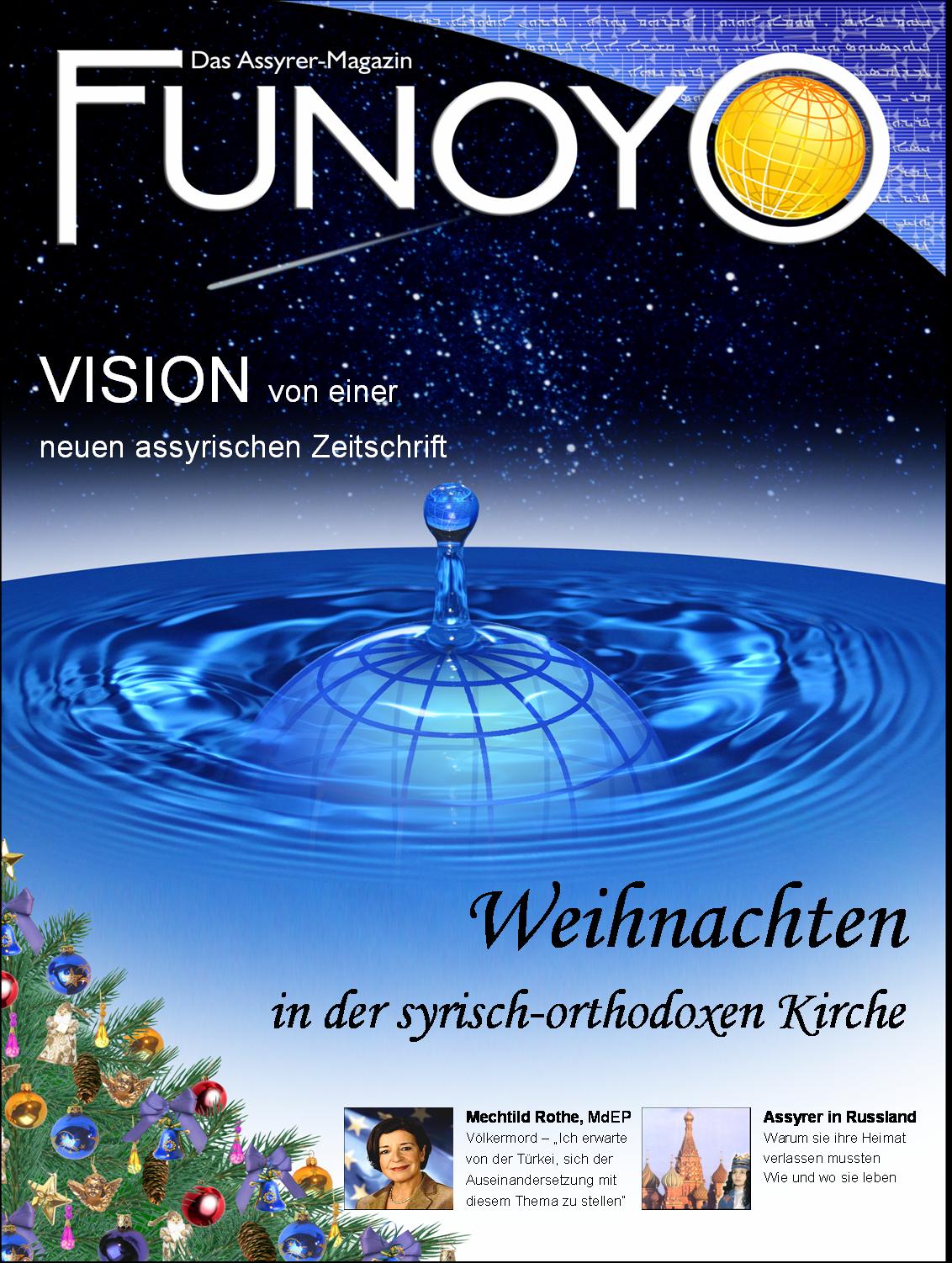 |
Contact Editorial Office at info@funoyo.de |
Khams and his family are among an estimated 2,000 Chaldean Christians – members of one of the Middle East’s oldest Christian sects and who belong to the Catholic Church – who have been quietly immigrating to Istanbul over the last two years (even larger numbers of Chaldeans have been seeking refuge in Syria and Jordan). Coming on tourist visas, the Chaldeans arrive in Istanbul hoping to be quickly resettled in the United States and Australia, where many already have relatives living, or somewhere in Europe. Instead, many have found themselves stuck in Turkey, living illegally on their expired tourist visas while they wait to move onwards. Although no exact figures exist, experts estimate that the Christian population of Iraq – made up mostly of the Catholic Chaldeans and the independent Assyrian church – is rapidly diminishing, with some 800,000 Christians currently living in the country of 27 million, compared to 1.4 million a decade ago.
And while the violence that has gripped Iraq over the last few years has affected all Iraqis, Christians say they have felt particularly vulnerable since, unlike the country’s Kurds or Sunni and Sh’ia Muslims, they don’t have a militia to protect their community’s interests. Meanwhile, as the insurgency in Iraq began to take on a more Islamist character, the country’s Christians increasingly found themselves targeted by militants, the most notable example being the coordinated bombing in August 2004 of five churches in Baghdad and Mosul, which killed over a dozen. In late January this year, car bombings outside Christian churches raised new concerns about sectarian violence.
George Mushe, 51, who came to Istanbul from Baghdad with his wife and three children, described a worsening spiral of violence that finally forced his family to flee. His son, who was working in a business that supplied spare parts to the American forces, had his life threatened and ultimately had to quit his job, while his two daughters luckily survived the bombing of the secondary school they were attending. Mushe, meanwhile, was forced to close down his business, a wedding hall that catered mostly to Christians, since holding events there simply became too dangerous. "There’s no life in Iraq now. If you leave your family to go to work or church, you don’t know if you will see them again," Mushe says, while sipping on a tea in an Istanbul pastry shop. "Before the war they looked at us as different, but we could go to church, to work."
"Our patriarch and bishops don’t want us to leave Iraq. They say our churches are now empty," he added. "They say that Muslims are also being killed. But what can we do? They are bombing churches."
For Nather Khams’s family, the comfortable life they knew in Mosul, an ethnically mixed city of Christians and Muslim Arabs and Kurds, quickly deteriorated after the launch of the American offensive. Sitting in the living room of the small, two-bedroom apartment the family of five now shares in Istanbul, Khams’s mother, Samira, pulls out a light blue headscarf as a way of demonstrating that change. "I couldn’t go out unless I wrapped this around my head," Samira says as she covers her tousled jet-black hair with the headscarf.
Khams’s 30-year-old sister, Maysam, says she found herself under increasing pressure to put on a headscarf and stop wearing slacks at the Mosul vocational school where she was a teacher. After the school started receiving anonymous telephoned threats against any female teachers not wearing a headscarf, Maysam decided to quit her job and stay at home. The family finally decided to leave Iraq after Khams’s father, Harbi, who ran a business distributing a pro-government newspaper, survived a shooting attack on his car. "It was a mixed feeling," Nather Khams, who ran a business in Mosul selling computer hardware, said about leaving Iraq. "We wanted to get to a safe place, but we were sad to leave our memories, our house, our friends."
In Istanbul, the Chaldeans have traded a life of certain danger for one of uncertain waiting. They have moved en masse to the city’s Kurtulus neighborhood, one of the few districts in the city that still has sizable Greek and Armenian communities. A steep walk down one hill and then up another one leads to St. Anthony’s cathedral, a massive brick church on Istanbul’s famous Istiklal boulevard, where the Chaldeans have been given the basement chapel as their own. On Sundays, Chaldeans can be seen leaving the church, as they wend their way through the narrow streets that lead back to Kurtulus, many stopping at a cut-rate outdoor bazaar to buy their fruits and vegetables for the week. "The church is central in our life," says George Mushe, who serves as a deacon in the Chaldeans Istanbul church. "Having a church here in Istanbul has been very good, to be able to pray in our own language."
Also not far from Kurtulus is the office of Caritas, the Vatican’s international aid agency, which is the main organization working with the Iraqi Christians in Istanbul. Located on the grounds of the Vatican’s consulate building, Caritas provides the Iraqis with social services and assistance in obtaining visas to third countries. Since the Iraqi children can’t attend Turkish schools because of their illegal status, Caritas also opened its own school, providing daily classes for elementary school-aged children.
In a space built for 65 pupils, some 250 children now study in classrooms that have been subdivided several times over. Even a chilly shed in a courtyard has been turned into a classroom.
Tulin Turkcan, Caritas’s director of refugee services, says the organization has been overwhelmed with work over the last two years. "People are coming all the time with questions and needs. It’s not easy," she says. "They need basic assistance – schooling, medicine, food. They need assistance from the government, but they know there is not assistance, so the most important thing is for them to be resettled in a third country." Over the last year, though, the number of Iraqi Christians being resettled has decreased significantly, Turkcan says. The United States and Australia are granting fewer and fewer families asylum. Turkcan and others working with refugees in the Middle East believe that fewer Iraqis are being granted refugees status because western countries and the United Nations High Commissioner for Refugees, the main organization responsible for determining asylum claims, fear that giving more Iraqis the opportunity to go to the west would create a pull factor that would eventually lead to a broader exodus from Iraq. Some suspect, meanwhile, that Washington is holding back on granting Iraqi Christians asylum because doing so would be an admission of its failure to create a post-Saddam Iraq that is safe for all Iraqis. For people like Nather Khams, days are now spent simply waiting for an answer to their asylum applications. With many Turks struggling themselves to find work, most of the Iraqi men are unemployed, although some of the women have been able to find work as domestic helpers. Khams says he and the rest of his family wake up at 11am most days, as if in some kind of collective stupor, and mostly stay at home watching Arabic satellite television.
"We have no rights here. We don’t have a permit to live here," he says with a furrowed brow. "We don’t feel stable here. You can’t find your future here." Could he and his family imagine going back to Iraq if the situation there improved? Samira Khams waves her hands emphatically. "We can’t go back," she says, her voice rising. "We have sad memories there. We couldn’t go back, even if it became good there."
 Yigal Schleifer is a freelance journalist based in Istanbul. Yigal Schleifer is a freelance journalist based in Istanbul.
Christian Churches in Iraq Subjected to Synchronized Terrorism
Courtesy of the Middle East Media Research Institute
24 February 2006, #267
Dr. Nimrod Raphaeli
Introduction
In a synchronized act of terrorism on January 29, 2006, seven churches were attacked - six by car bombs and a seventh, St. Joseph, in the banking district of Baghdad, by explosives which caused no damage. Five of the churches are located at various parts of Baghdad and the other two in Kirkuk, northern Iraq. There were a number of casualties among Christians and passer-by Muslims. [1]
Elements Behind the Terrorist Acts
The bombing of seven churches in seven quarters of two large cities - Baghdad and Kirkuk - simultaneously is a well-planned and well-executed terrorist act. This act of terrorism raises two questions: first, who might be the perpetrators; and second, what could be their motives.
Possible Perpetrators
Unlike terrorism against government targets or against the multinational forces, no one has taken responsibility for bombing the churches. The perpetrators remain unknown. There is, however, a similarity in the bombing of the churches and the bombing of the Shi'ite mosques in Iraq. It may suggest that al-Qa'ida Organization in the Land of the Two Rivers under abu-Mus'ab al-Zarqawi is behind these acts of terrorism because of its campaign against the Shi'a of Iraq and against the crusaders (Christians).
Imam abu Abdallah [pseudo.], who is associated with a terrorist group linked to al-Zarqawi's group, known as Jeish Muhammad (the Army of Muhammad), in the predominantly Sunni City of Faluja threatened to take revenge [against Christians] for the publication of the caricatures. Similarly, Khalid al-Khatib, the Imam of one of the mosques in Falluja, declared that "the communities of apostates are the same whether they are Danish, French or British." [2]
The Motives
Christian spokesmen maintain that the motive behind the bombings is to spread sedition (fitna) in the country, which could lead to a civil war, one of al-Zarqawi's stated goals. They accuse "Arab fanatics" whose bombing and whose "daily threats, kidnappings [and] discrimination" aim to "drive the Christian community out of Iraq." [3]
There are also Christian spokesmen who suggest that there might be some linkage between the bombings of the churches and the publication in Denmark and, subsequently in Norway and other European countries, of the offensive caricatures of Prophet Mohammad. However, Msgr. Rabban al Qas [4], the Chaldean Bishop of Amadiyah and Erbil (Kurdistan), discounts the linkage because, according to him, it takes weeks to plan such a synchronized attack and to prepare the car bombs. [5]
The Reactions of the Christian Clergy
The Christian clergy denounced these acts of terrorism against their churches. Bishop Shlemon Wardana, the assistant to the Chaldean Patriarch of Iraq, denounced "those furtive individuals who seek to plant the spirit of division and discord among the various segments of the Iraqi people who have lived in peace." Similar sentiments, with slightly different wordings, were expressed by Msgr. Ikram Ibrahim Mehani, who is described as the spiritual leader of the National Evangelical Protestant Church in Baghdad, by the Assyrian professor and thinker Yusuf Qazanchi and by Msgr.Raphael Qutaimi, the deputy head of the Assyrian Catholic community. [6] What is surprising is the silence of the Iraqi political leadership and their failure to denounce the attacks on the churches.
Writing about the "Shameful Aggression against the Iraqi Christians" in the independent electronic daily Sot al-Iraq, Aziz al-Haj, a former leader of the Iraqi Communist Party, blamed the Islamists for spreading a religious culture that permits the killing of what they refer to as the apostates. "The pursuing of the Christians since the fall of Saddam and the chain of attacks against the churches," wrote al-Haj, has been done because of religious hatred to all other religions. Al-Haj finds similar roots of hatred in "the besieging of Christians, and Christian women in particular" by the supporters of the young extremist cleric Muqtada al-Sadr, first in al-Sadr City and later in the city of Basra, which caused hundreds of Christians to leave.
After highlighting Christian contributions throughout the history of Iraq, al-Haj finds a similar pattern in what is happening in Iraq and in what is happening in other Arab countries in terms of restrictions and discriminations against other religions. He gives the examples of the Copts in Egypt, the Southerners in Sudan, including the raping of their women, and finally the criminal role of the Zarqawis who blow up mosques as well as churches. [7]
In a subsequent article, Aziz al-Haj laments the attempts by Islamists to turn the issue of the caricatures of Prophet Mohammad into a struggle with Christianity and Christians, implicitly encouraged by governments which seek to divert attention from internal disasters. Al-Haj suspects that the participation of Muslim clerics and intellectuals as well as a number of major Islamic organizations in conferences about "the dialogue of civilizations" is nothing more than "devious methods to conceal the Islamic rancor toward Christianity and Judaism and toward the Western civilization which is centered in the countries of the west." [8]
Conclusion
The Christians in Iraq and perhaps Christians elsewhere in the Arab countries are beginning to feel the pressures of raging Islamist groups which show no tolerance for all those other religions.
As the Assyrian International New Agency has reported: "On the streets, in the city, they [Muslims] always throw the same accusations at us: 'infidels of the cross.' Even with Muslims with whom we are on good terms, we always feel the weight of this condemnation." [9] Ashur Yelda (50 year), a teacher in Kirkuk, said: "I am afraid to go out on the street because I am Christian." [10]
Notes
- Please refer to MEMRI Inquiry and Analysis No. 213, "The Plight of Iraqi Christians," March 22, 2005: http://memri.org/bin/articles.cgi?Page=archives&Area=ia&ID=IA21305.
- Al-Quds Al-Arabi (London), February 4, 2006.
- Assyrian International News Agency, February 1, 2006.
- Names are transliterated phonetically and many not be entirely accurate.
- Ibid.
- Al-Zaman (Baghdad), January 30, 2006.
- http://www.sotaliraq.com/articles-iraq/nieuws.php?id=25147, January 31, 2006.
- Dr. Aziz al-Haj, "The New Crusaders' War," in www.iraqoftomorrow.org , February 8, 2006.
- February 1, 2006.
- Al-Quds Al-Arabi (London), February 4, 2006.
 Dr. Nimrod Raphaeli is Senior Analyst of MEMRI's Middle East Economic Studies Program. Dr. Nimrod Raphaeli is Senior Analyst of MEMRI's Middle East Economic Studies Program.
Honey and Vinegar
Attitudes toward Iran's Assyrian Christians
Dr. Eden Naby
Harvard University
Courtesy of the iranian.com
14 March 2006
Even as the number of Assyrians in Iran diminishes toward the point of extinction, the attitudes about them appear to harden into chauvinistic prejudice. The recent remarks of a high cleric in Urumiyah NOT to buy Assyrian property because they are all leaving and then the property will be free, symbolizes the latent prejudice against non-Muslims. To see similar sentiments expressed by Muslim Iranian émigrés is nothing short of disgusting.
Outright disinformation, hopefully born of genuine lack of information and not prejudice, permeates Internet writing about this last substantial Aramaic speaking population of the world. Most of this writing comes from the keyboards of recent Iranian émigrés, who with basic professional education derived from pre-Islamic Revolution universities, have succeeded in transferring their lives to the West. Some of the attitudes they express about Assyrians are patently offensive though not infrequently coated in honeyed condescension.
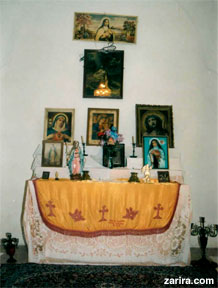 |
"Honey & Vinager" |
In some recent writing on Iranian.com ["Cold & dark"], Assyrians are being called Nestorian Kurds, thus denying their ethnic uniqueness. The review of Dr. Rami Yelda's book, A Persian Odyssey: Iran Revisited (New York, A. Pankovitch Publishers, 2005) is particularly replete with assertions based on a clear inability to read a well-written and sophisticated book. Indicative of this tendency is the misspelling of the author's name, "Yalda" for Yelda, and then a play on the Persian borrowing of an Aramaic/Syriac word referring to "birth."
Yes, we all know that shab-e yalda is the celebration of the longest night of the year, the winter solstice. The reviewer misspells the author's name, and then proceeds to associate his name with "cold and dark." For most of us shab-e yalda is a fun family time of stories, family albums, candles and raisins and walnuts. The cold and dark is not in the author's heart, as the reviewer asserts on the basis of a misspelling of his name, but grows out of her own prejudices against a Christian, with a Christian name, writing about the homeland that has historically shunned people of his ethnicity and faith.
And she continues in this distasteful vein with the claim that Dr. Yelda carries a chip because his "great great grandfather" had been killed. No, Madame. The author speaks of "both of his mother's grandfathers" being killed in the streets of Urumiyah during World War I. Those gentlemen were just two of the hundreds of old men and women cut down in revered old age by fanatical thugs. My Assyrian grandfather was dragged out of his home in 1914 in the rich village of Golpashan (a satellite village of Urumiyah), together with all males over 12 and butchered at the Christian cemetery. The attractive girls were carried off, including his daughter, my sixteen-year-old aunt, to a rape camp from which most did not return. These memories are not thousands or hundreds of years old. They are part of the first genocide of the 20th century.
For most Assyrians, Dr. Yelda represents the Iranophile trend in the Assyrian community in the West. He loved Iran as is obvious to any reader not blinded by prejudice. He does not fawn over the current state of affairs, especially the application of Shari'a law to women -- about which he writes from the perspective of Muslim women activists he interviews -- as does Iranian.com. Nor is he happy with the discriminatory treatment of Christians, (or Jews, Zoroastrians and Bahais) whether they are ethnic Assyrians or not. Who but the most rabid of fanatical extremists would be happy with the application of medieval religious law to minorities or society in general? Isn't this application of Shari'a law the reason Muslims too escape to the West? Europe and the West have passed through this phase of discrimination based on faith-sanctioned superiority although rearguard action by throwbacks demands constant vigilance.
Why should an Assyrian author not point to warts in recent Iranian history as well as the problems in the present? Because he is not Muslim? If he converted to Islam, would it then be OK to criticize the evil he sees?
The reviewer's attempts to wrap her vile and unfounded slamming of this book with the implication that it represents some form of Islamophobia is perhaps the most damaging of the attitude toward Iran's Christians and the émigré Assyrian population that has found a home in Chicago and elsewhere in the United States. The first Assyrians who left Iran during the second part of the 19th century came to study and return. Then came those who departed "Persia" due to the discrimination they encountered in employment. If they converted to Islam, then all jobs opened to them. And some did convert among Assyrians as well as Armenians.
Due to the work restriction, many young men made multiple trips to the United States as labor immigrants and returned before WWI to buy orchards, vineyards and fields with which to make a living for their families. Most of those who had not returned to Iran by 1914, and thus become part of the slaughtered, sent money back to bring what remained of their families out of the Urumiyah- Salamas area.
2/3rds of the Assyrians of the Middle East died in that War, including those living in northwest Iran. To their credit, the Muslims of Tabriz stood fast against the killing, raping and looting of Christians in that town. Not so west of Lake Urumiyah.
If Iran had been less discriminatory toward Assyrians, as both the embodiment of a part of Iranian culture, and as indigenous Christians, the approximately 100,000 Assyrians (of all denominations) that lived in Iran in January 1914 would have grown at a rate similar to that of the country as a whole. Iran was then about 10 million. Assyrians were about 1% of the total population. If they were 1% of the population today, they should have been close to a million. Instead they are about 7-15,000. The most precipitous decline, after WWI, came following 1979.
When the fanatics came for the Assyrians in WWI, few defended them. (A few Muslim families did in fact, at great danger to themselves.) In 1979 they came for the secularists, the moderates, the Jews and the Bahai's. When information about Assyrians is so widely available on the Web (AINA.org for one) why should an émigré Iranian feel entitled to misrepresent Assyrians in such misinformed tones?
Iranians, Muslims or not, especially in their comfortable Diaspora professional lives, should not shrink from looking at the dirty laundry of history. To attack the revelation of the painful Assyrian history by trying desperately to shoot the Assyrian messenger smacks of denial of reality. And when did denial lead to improved attitudes?
Did the British Really Do the Good Fight Once Before in Iraq?
Mikhael K. Pius
California
Some time ago, recently, an article appearing in the Honolulu Star Bulletin website of March 23, 2003, was brought to my attention by a conscientious Englishman. I submitted a rebuttal to it to the Star Bulletin, but I received instead the following email:
“Dear M.K.,
You have written a long, involved response to a story that we published nearly three years ago. It is too long and the story it references is too old to merit publication. However, I have forwarded your commentary to the reporter in question for his perusal. Thank you for writing.
Aloha,
Nancy Christenson, Assistant editor
Editorial section, Honolulu Star-Bulletin
7 Waterfront Plaza, Suite 210
500 Ala Moana, Honolulu,
Hawaii 96813; 808-529-4335”
There are many erroneous statements in Mr. Burlingame’ article. Sorry, his article is too long to be quoted in whole here, but my rebuttal is to those passages which are glaringly erroneous, such as the following:
1. “If not for an overwhelmed handful of Royal Air Force student pilots and Kurdish mercenaries, (highlighting is mine) World War II might have been over before the United States ever entered the fighting.”
KURDISH mercenaries indeed! It was the Assyrian Levies that saved Habbaniya—as well as the M.E. oil for the British!
2. “In addition, two RAF training bases were established, one at Shaibah -- near the port of Basra -- and a smaller base on the shores of Lake Habbaniya,..”
Habbaniya, and not Shaibah, was the much bigger air base.
3. “The local levy troops also proved resourceful and brave in combat.”
Read: The local ASSYRIAN levy troops also proved resourceful and brave in combat.
4. “Relief columns of British troops -- a mobile brigade dubbed ‘HabForce’ and a battalion called ‘KingCol’ -- pressed up from Palestine… After a fortnight of give-and-take air combat, HabForce ‘rescued’ the Habbaniya garrison and joined up with troops from Basra.”
May I point out to Mr. Burlingame that when these Forces arrived, ASSYRIAN levies and RAF bombers had already saved Habbaniya. Among the tiny contingent of Assyrian Levies were many who fought the Iraqi Army with tooth and nail. They were close relatives of the three thousand Assyrian villagers in northern Iraq slaughtered eight years earlier by the troops of the “brave” KURDISH leader of Iraqi Army General Bakr Sidqi to avenge the thrashing of a contingent of his mechanized army by a band of Assyrian ex-Levies who had crossed into Syria and were returning to rejoin their families in Iraq when they were attacked by the Iraqi Army to stop them from reentering Iraq.
As Bakr Sidqi’s army soldiers were massacring unarmed defenseless Assyrian villagers in August 1933, the British had confined the Assyrian Levies to barracks and RAF planes flew over the scenes to take photographs of the atrocities for the British press!
Evidently, Mr. Burlingame has no clue about the history of RAF (Iraq) Levies, let alone about the history of Assyrians (whom he probably thinks are Syrians, as most Westerners do). Assyrians were the backbone of the Levy Force and served the British loyally from WW1 up to the time the Force was disbanded in May 1955 when the RAF surrendered their bases in Shaibah and Habbaniya to the Iraqi Government.
Kurdish Levy mercenaries indeed! But, then, the Kurds have become the British and the American darlings now, so much so that the Kurds have the brashness to steal not only Assyrian lands and property but also ASSYRIAN votes and history!
It was only three companies of ASSYRIAN Levies with some assistance from a score of old RAF training bomber airplanes that delivered the knock-out punch to Rashid Aali Al-Gailani’s army in May 1941. In fact, the Assyrian Levies’ loyalty and gallant defense of Habbaniya was what changed the course of WW2 for the Allies and thwarted the Nazi plan to occupy the M.E. oil fields at a time when the British were backed up against the wall by the terrible Panzer Divisions of General Erwin Romel. The Assyrians are Christians and are always loyal to those they have pledged their loyalty.
At the time of Habbaniya siege, the military strength at Habbaniya was only five Levy companies, one each Kurdish and Arab and three Assyrian, along with several hundred RAF personnel and a score of old training airplanes. The Kur-dish and Arab Levy companies were con-fined to guard duty on the Station because the British could not trust them to fight against their co-religionists, the Arabs.
Because of their loyalty and bravery, consequently the Assyrian Levy strength was increased to ten thousand men during WW2 years. They guarded the British installations all over the Middle East, with a parachute battalion fighting gallantly in Greece, Italy, and Albania. They were not mercenaries (as Mr. Burlingame indicates) costing the British Exchequer an arm and a leg, but a local military force protecting the fledgling Iraqi Kingdom’s borders, quelling local uprisings and protecting the British imperial interests for a pittance of a salary.
Incidentally, the two armed men shown in the picture illustrating Mr. Burlingame’s article guarding the RAF Blenheim airplane (as reproduced here courtesy of Christopher Shores’ book Dust Clouds in the Middle East) are not Kurdish mercenaries in Habbaniya, as he alleges, but Glub Pasha’s Arab Legion soldiers guarding the airplane at H-4 near the Syrian border (as the above caption indicates) and who arrived AFTER the ASSYRIAN Levies, assisted by RAF airplanes, had routed the fifteen thousand Iraqi troops, not to mention thousands of Arab tribal warriors, from their strongholds on the Habbaniya Plateau and chased them east 18 miles to Falluja, which town the Assyrians also subdued after a few days of bitter fighting.
In the early days of the siege, after the Iraqi troops entrenched on the plateau were “softened up” by constant bombing, a King’s Own Regiment contingent flown over to Habbaniya through Basra was given the first opportunity to dislodge the Iraqi forces from the Plateau. They made an open ground daylight attack. Many of them were slaughtered like sheep by the Iraqi fire! The RAF withdrew them and called on the Assyrian Levies to attack. The Assyrians, many of whom were experienced mountain fighters, made a three-pronged attack at night and soon routed the Iraqi Army and had it on the run toward Sin Adh-dhiban and Falluja.
Unfortunately, every time the British write about Habbaniya and the 1941 siege they either ignore the role of the Assyrian Levies in the battle or they give it only a passing mention! And Mr. Burlingame is a worse exception because he has changed the facts too.
|
Bravo
Assyrians at Their Best
|
|
Robert Alaux's New Film Documentary about Seyfo
Afram Barryakoub
Sweden
The French documentary film maker Robert Alaux and the Assyrian radio journalist Nahro Beth-Kinne have produced a new film documentary on Seyfo (or the Genocide of the Ottoman Christians in 1915) called ”Seyfo, l’Elimination” (Seyfo, The Elimination).
The DVD is 52 minutes long and can be viewed both in Western Assyrian and French languages.
It features interviews with the Assyrian author and researcher Sabri Atman, the late Bishop Mor Julius Cicek and many others.
The film gives the viewer a good background of the Assyrian genocide and an account of the horrible events between 1914 and 1918 told by Seyfo witnesses when more than 750,000 Assyrians were savagely murdered by the Turks and Kurds.
The film takes the viewer back to Assyria with its villages and aged stone churches and follows Mr. Nahro Beth-Kinne as he travels back to Assyria to find out more about his heritage.
The Assyrian journalists Mr. Augin Kurt and Mr. Gabriel Afram provided the documentary with the voice-over and translation and thus have liven up the film with purely beautiful Assyrian language.
The documentary is a welcomed voice in the ongoing Seyfo awareness campaign. It will help younger generations to learn more about the genocide that affected the Assyrian nation immensely.
To order copies of the documentary or give comments write to:
alaux.robert@free.fr
Nahro.beth-kinne@tiscali.be
|
|
Thank You
The following individuals contributed to the publication of this issue:
|
| Dr. Matay Beth Arsan |
Holland |
| Ramin Daniels |
California |
| Mazin Enwiya |
Chicago |
| George Hanna |
United Kindgom |
| Nahrain E. Kamber |
California |
| Youkie Khaninia |
Arizona |
| Atheer Tallo |
California |
|
ZINDA Magazine is published every week. Views expressed in ZINDA do not necessarily represent those of the ZINDA editors, or any of our associated staff. This publication reserves the right, at its sole discretion, not to publish comments or articles previously printed in or submitted to other journals. ZINDA reserves the right to publish and republish your submission in any form or medium. All letters and messages require the name(s) of sender and/or author. All messages published in the SURFS UP! section must be in 500 words or less and bear the name of the author(s). Distribution of material featured in ZINDA is not restricted, but permission from ZINDA is required. This service is meant for the exchange of information, analyses and news. Any material published in Zinda Magazine will not be removed later at the request of the sender. For free subscription to Zinda Magazine, send e-mail with your name, address, telephone number to: zcrew@zindamagazine.com.
ZINDA means "Spark of Fire" in modern Syriac (Assyrian); Zinda's Red Swoosh is a rendering of the seventh letter in the Assyrian alphabet, letter ZEN, and the first letter in the word "Zinda". For more information about the Assyrian culture and heritage write to Zinda Magazine.
Zinda Magazine™ Copyright © Zinda Inc., 1994-2006 - All Rights Reserved - www.zindamagazine.com |



